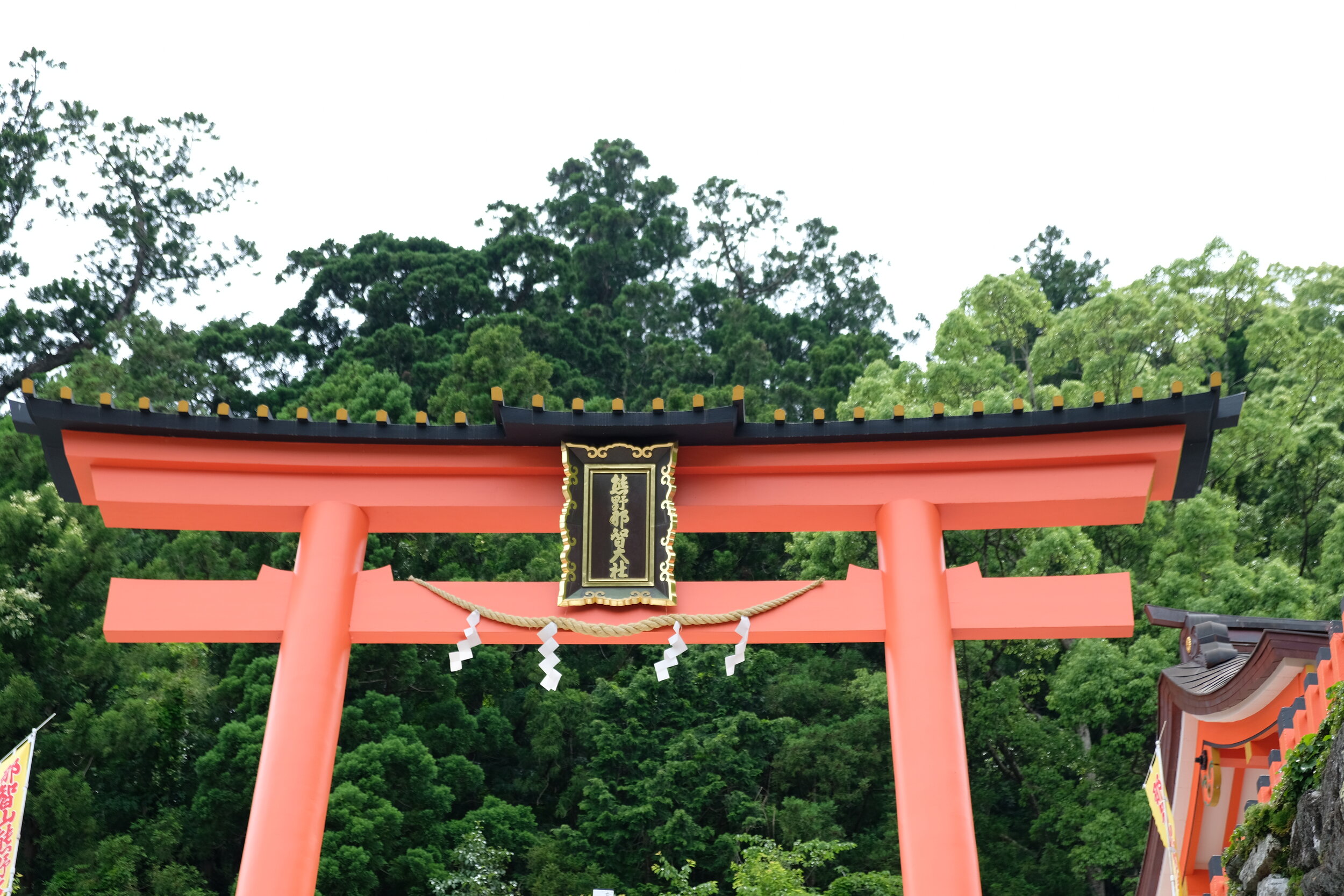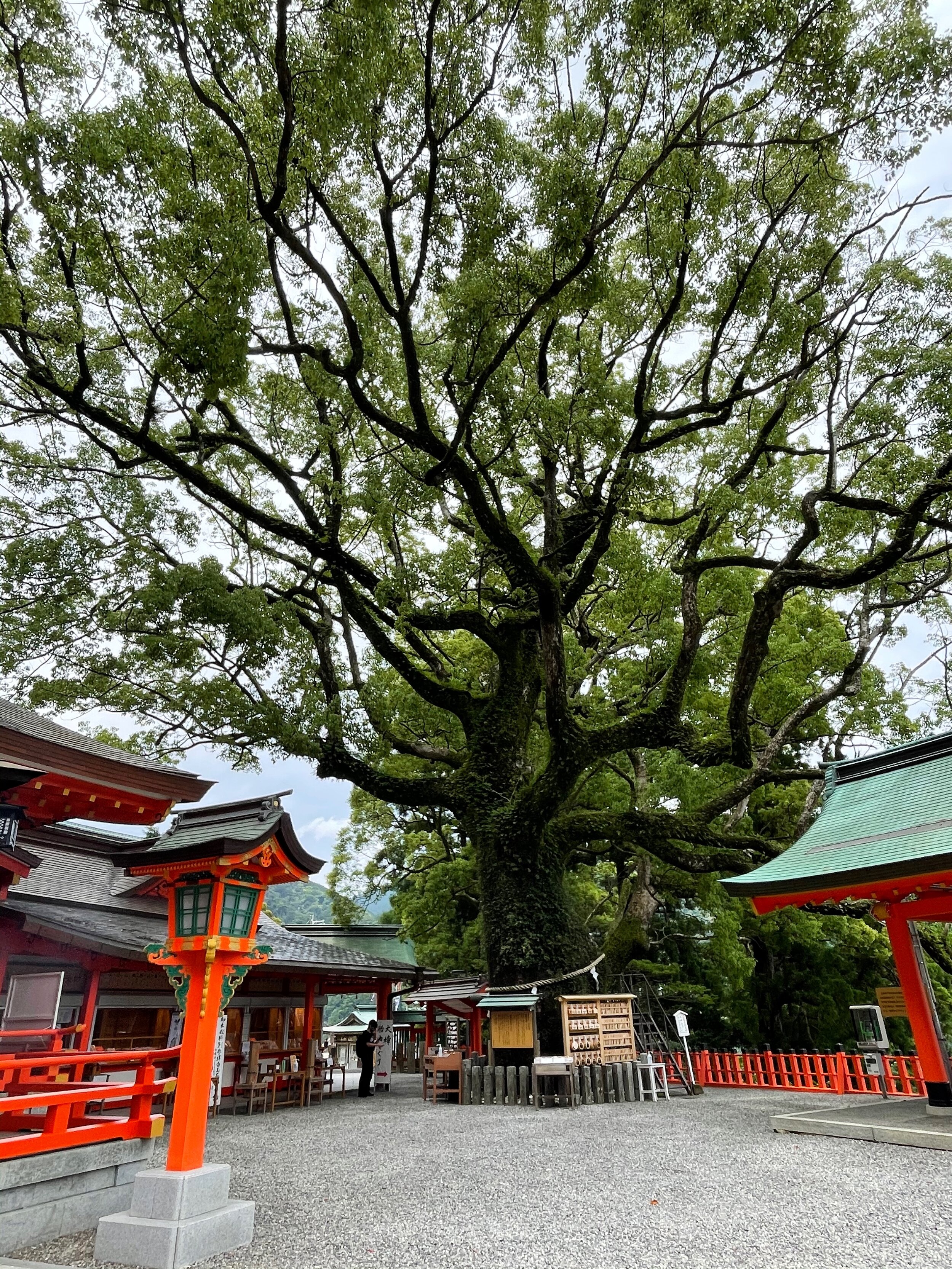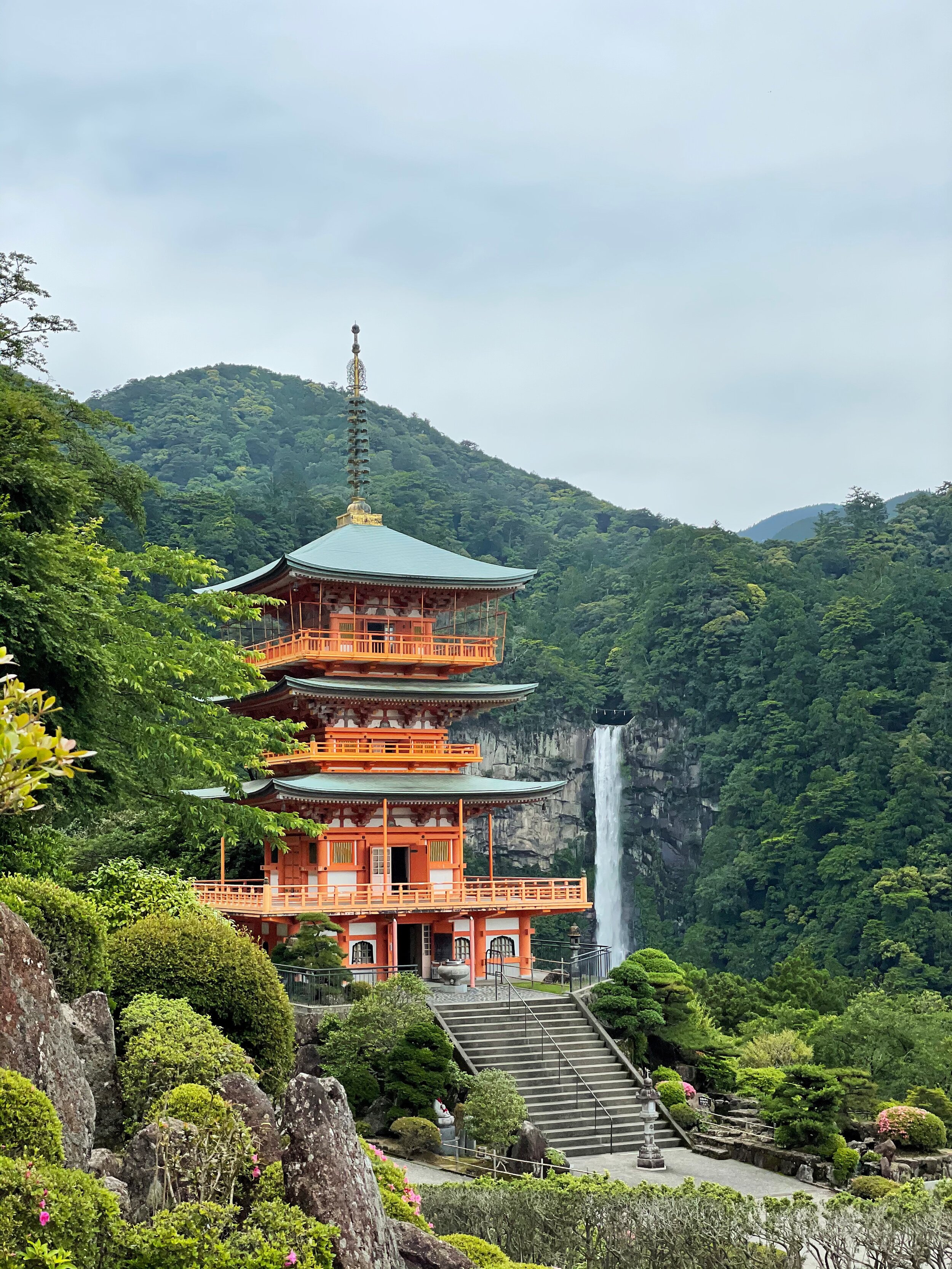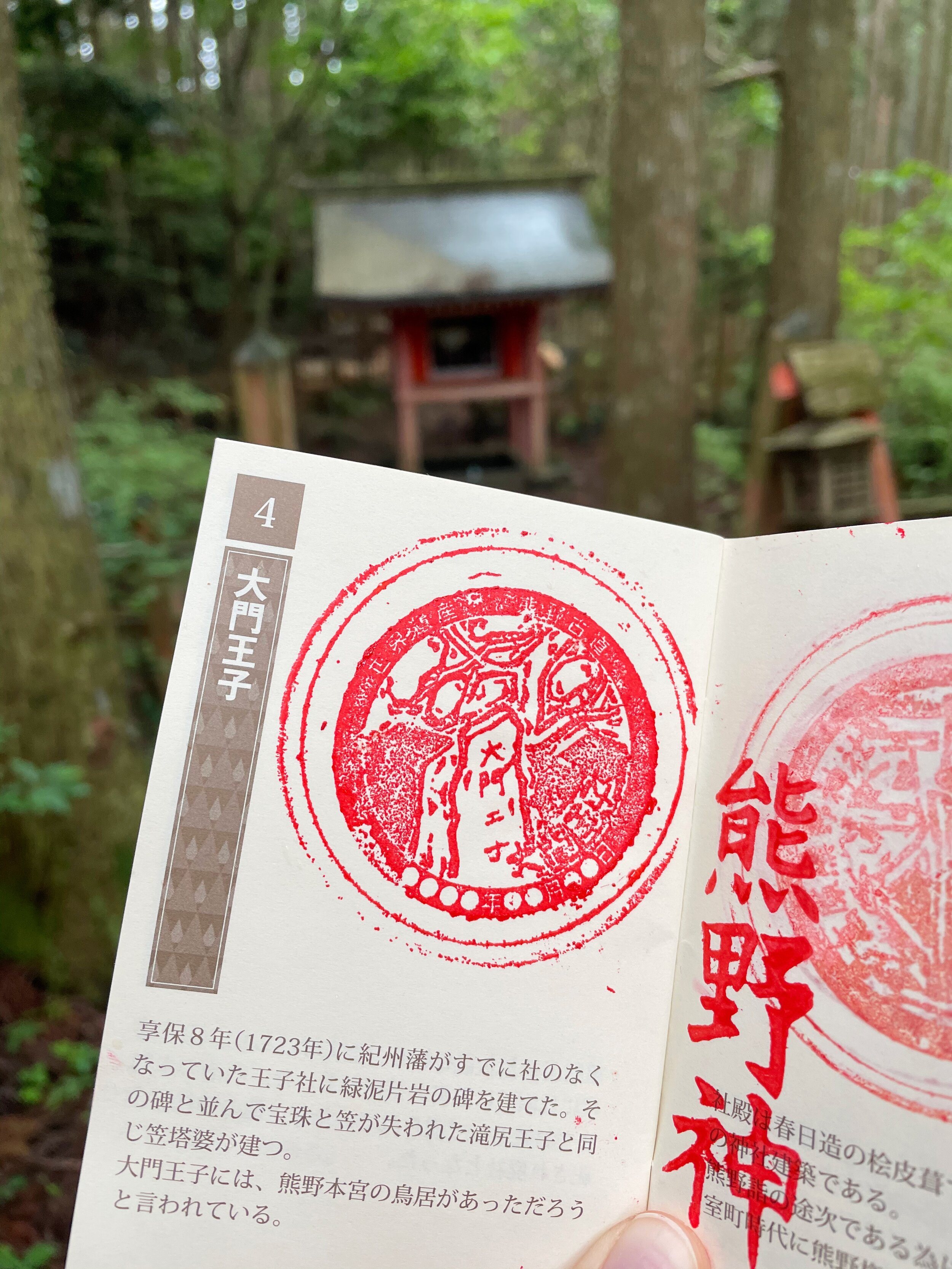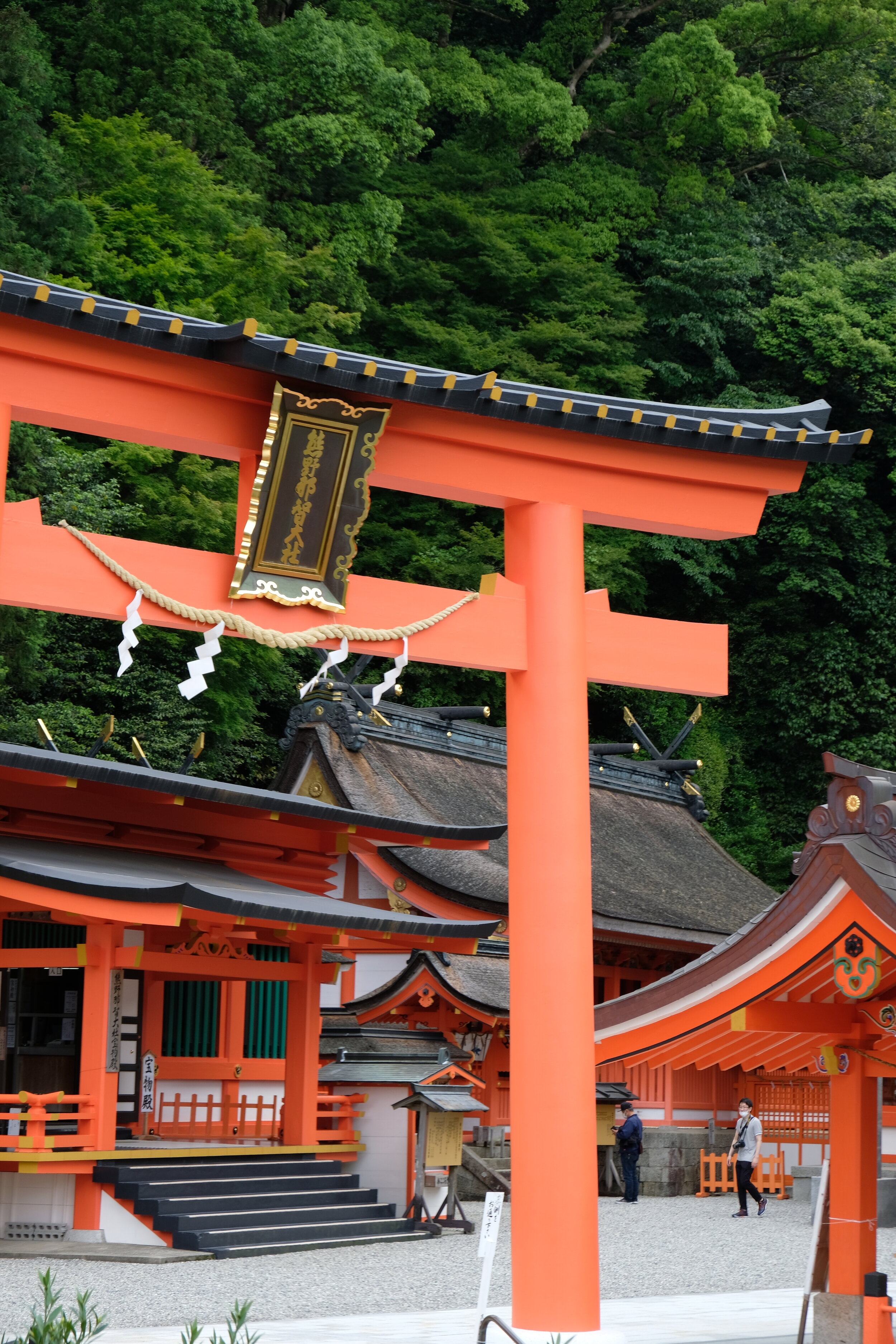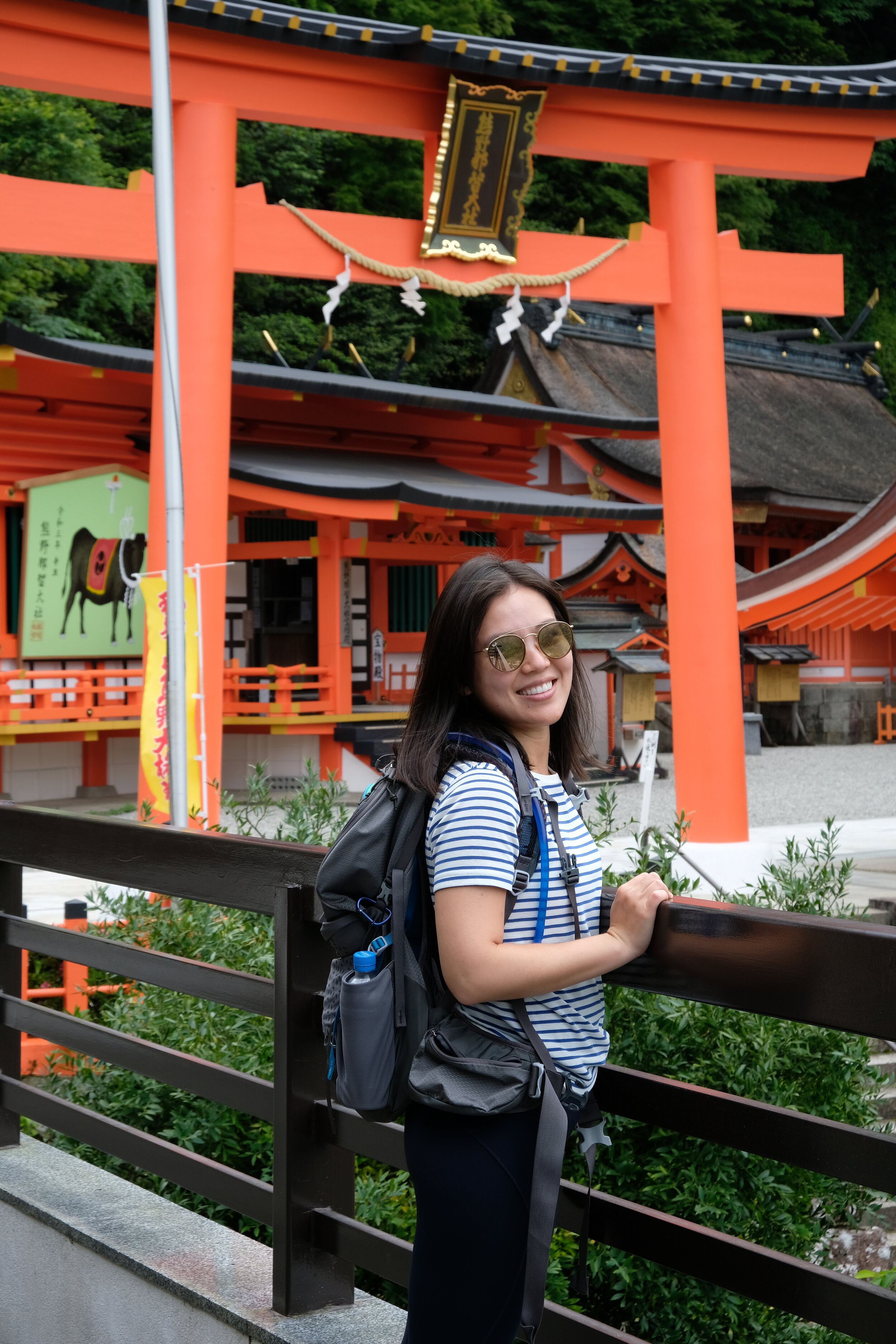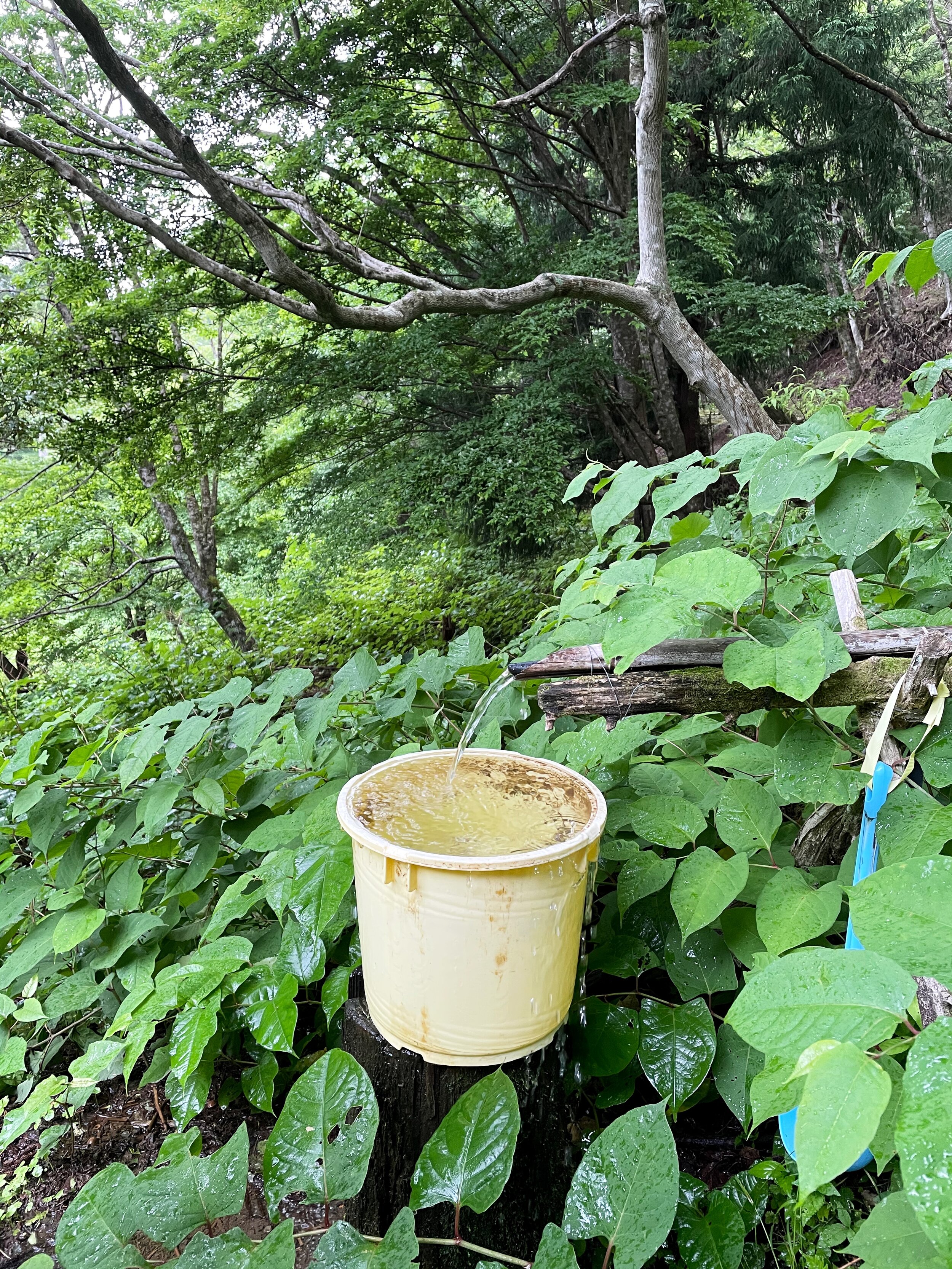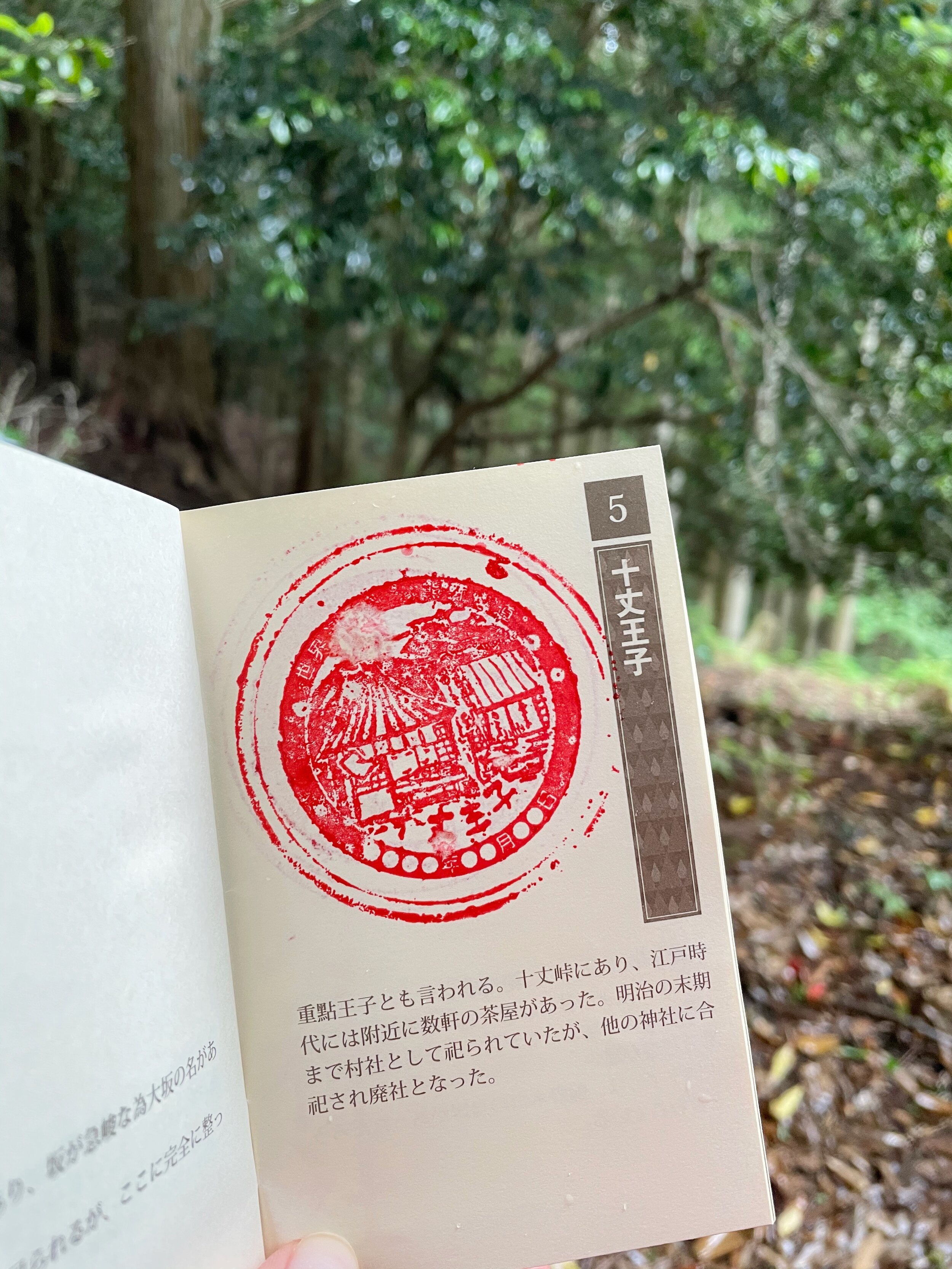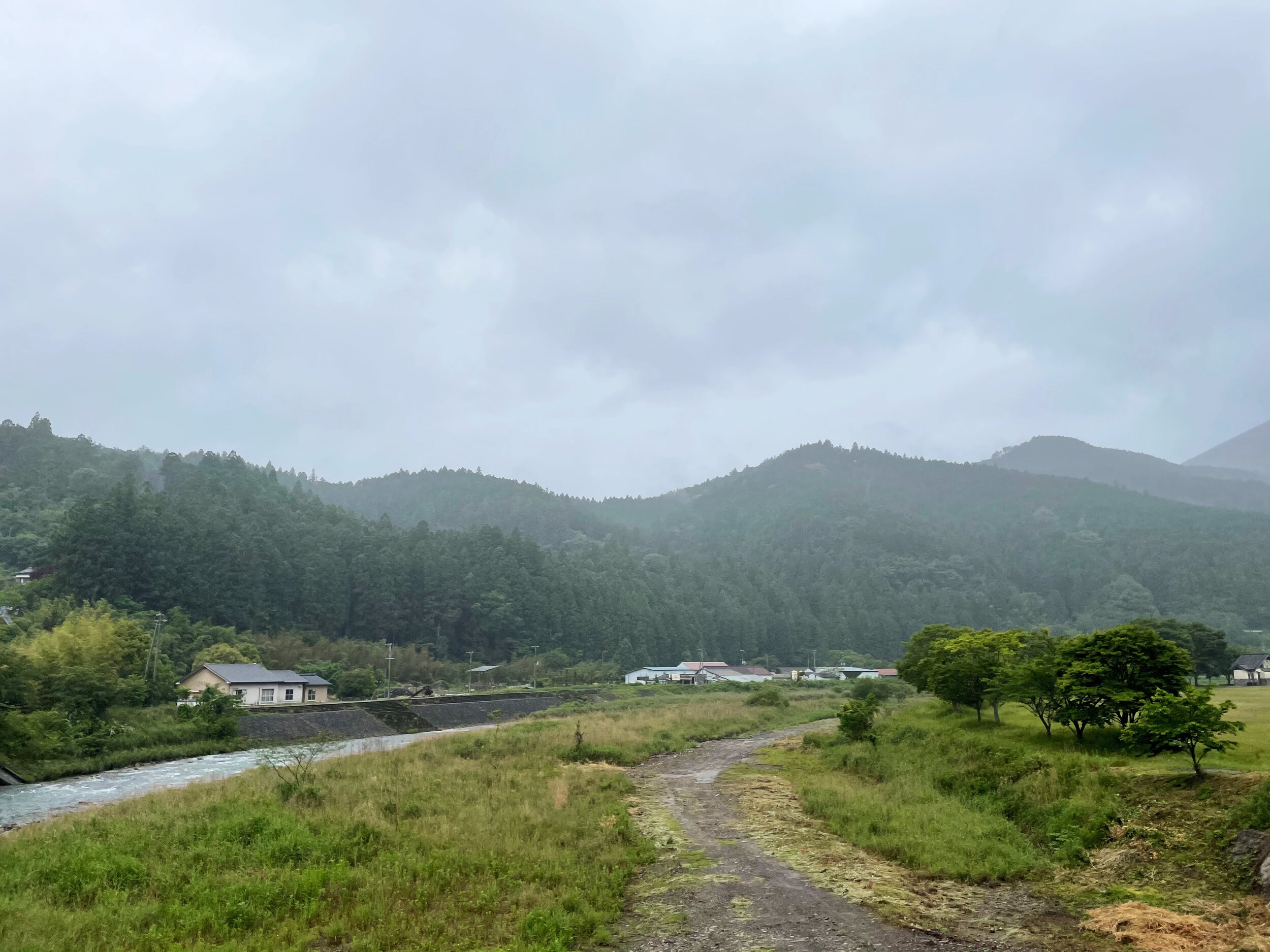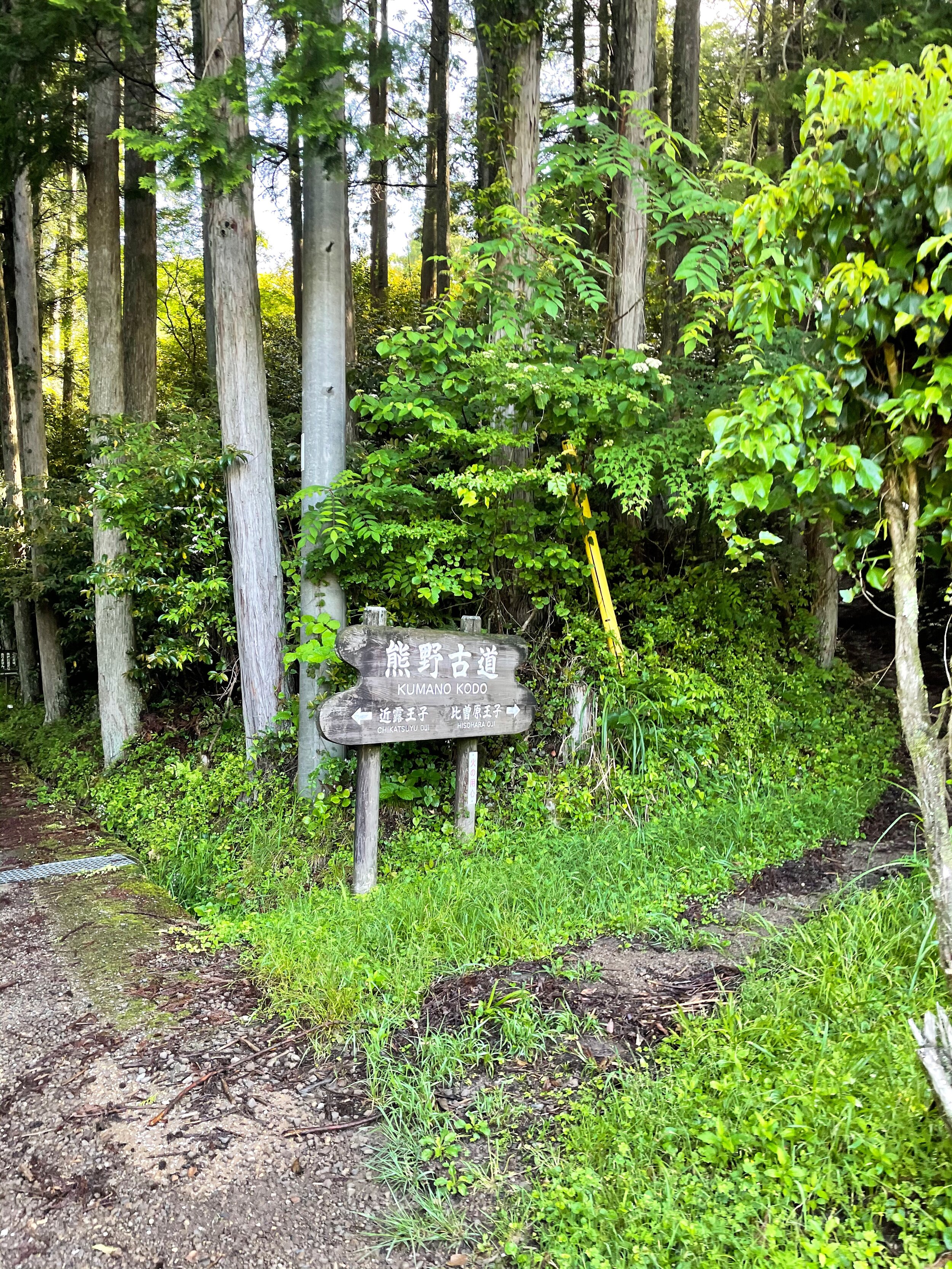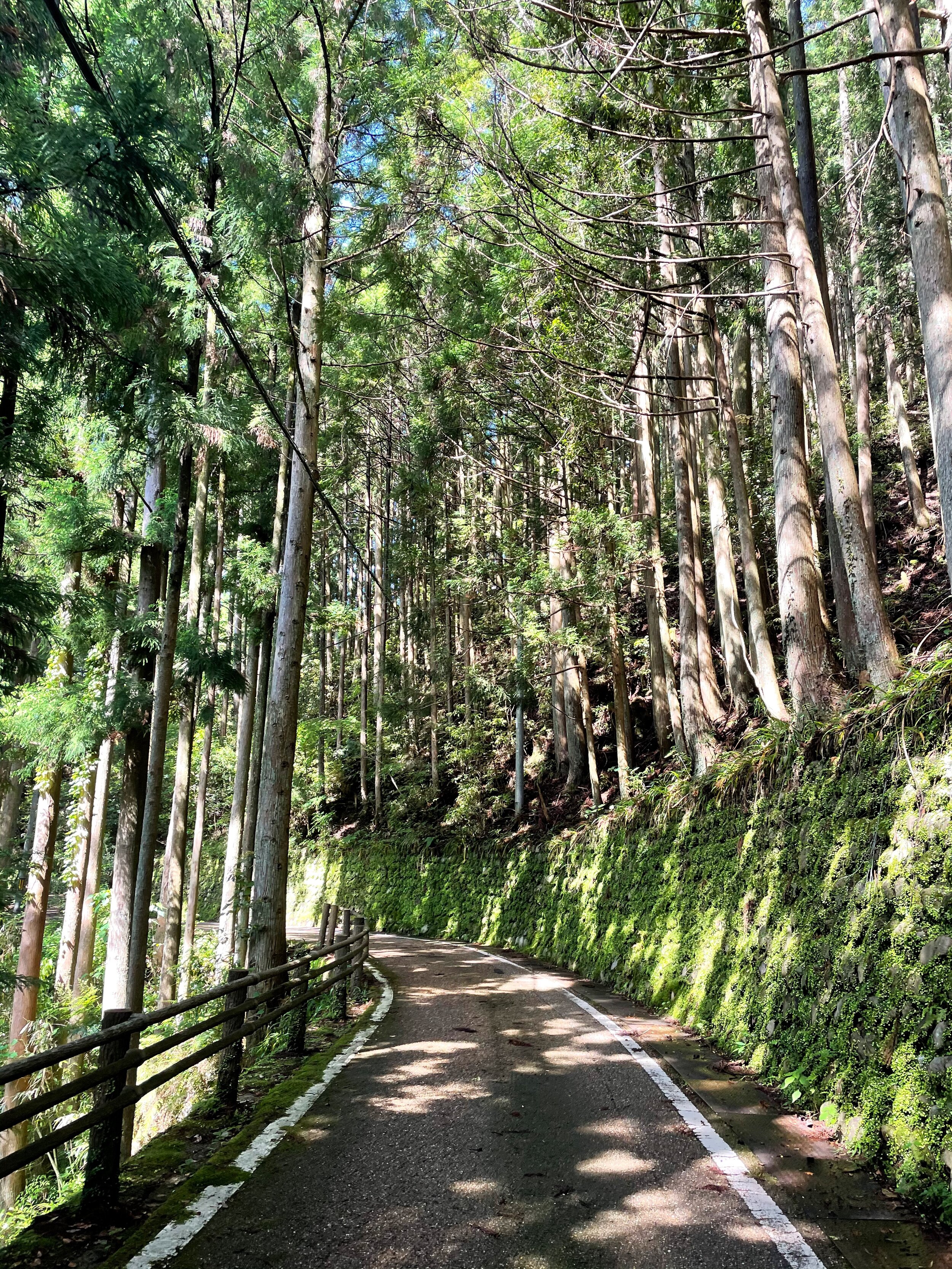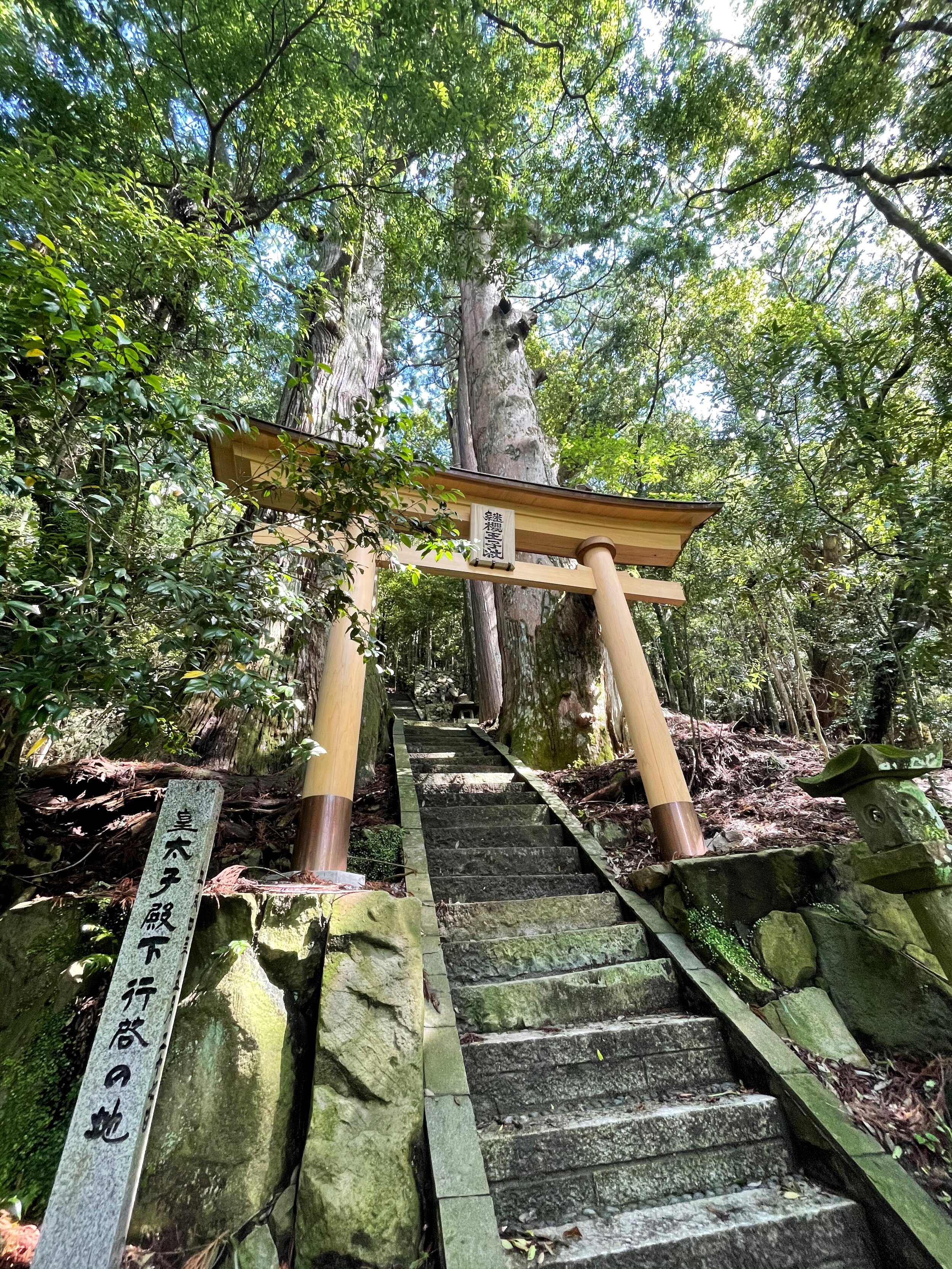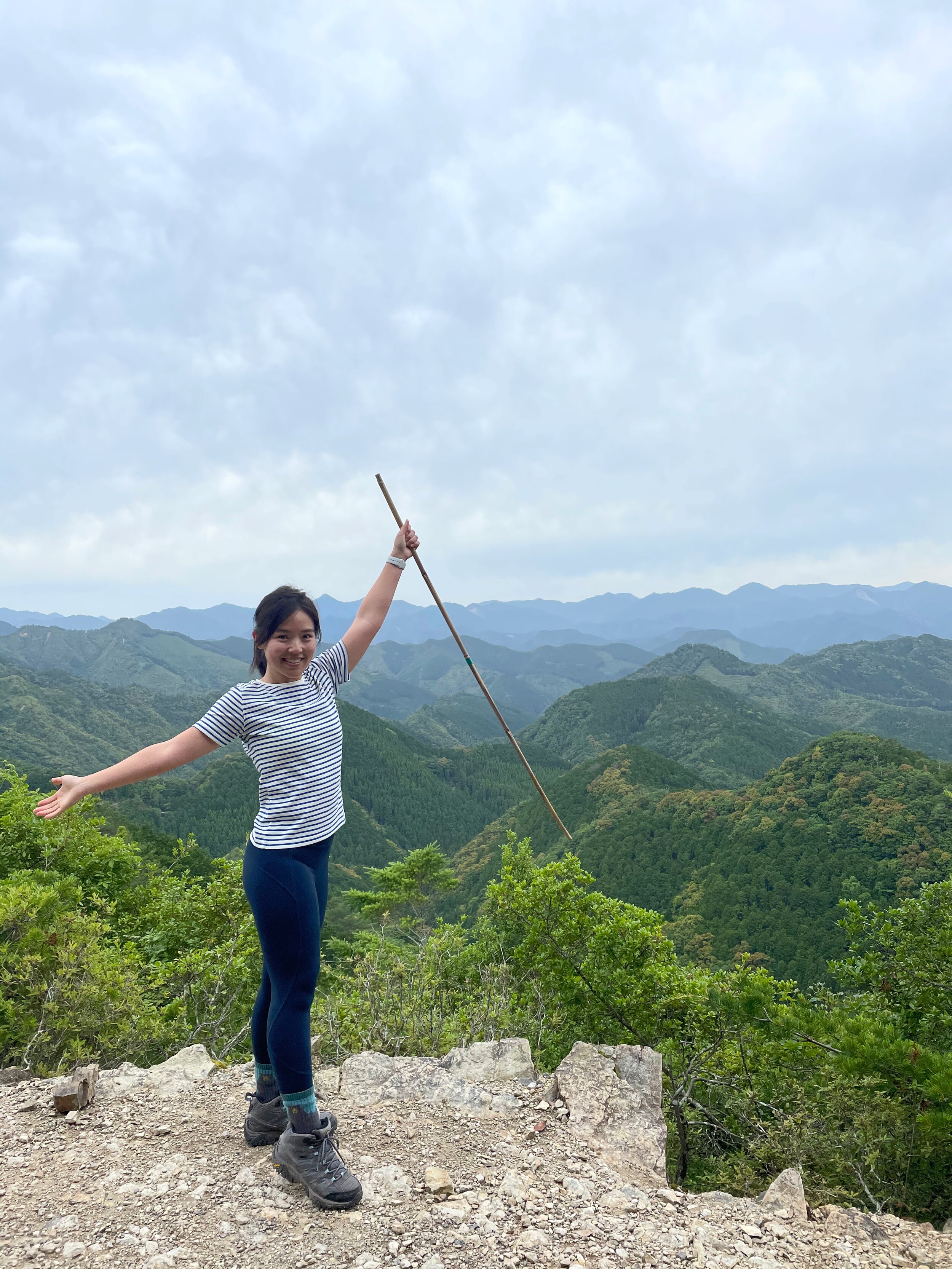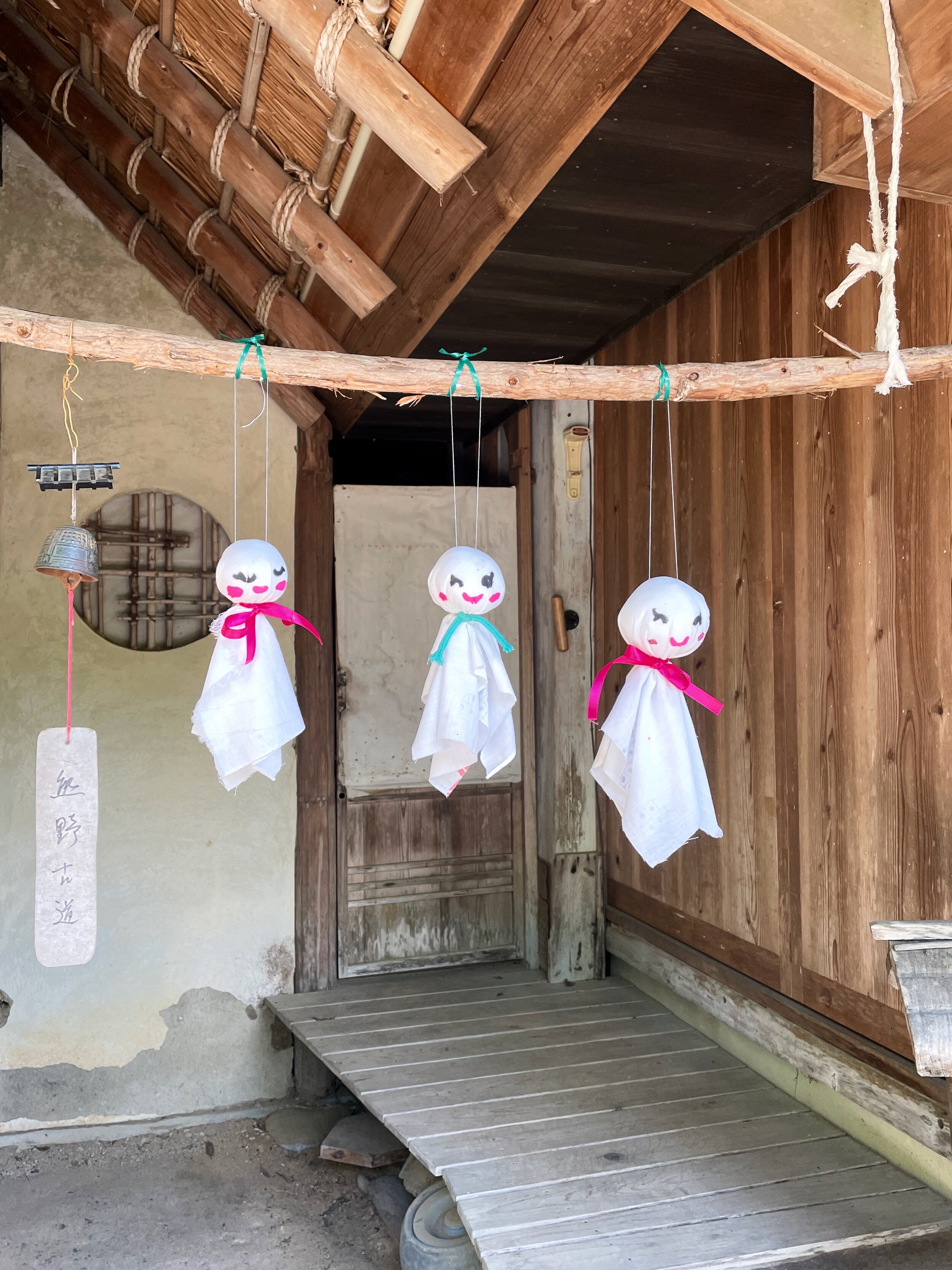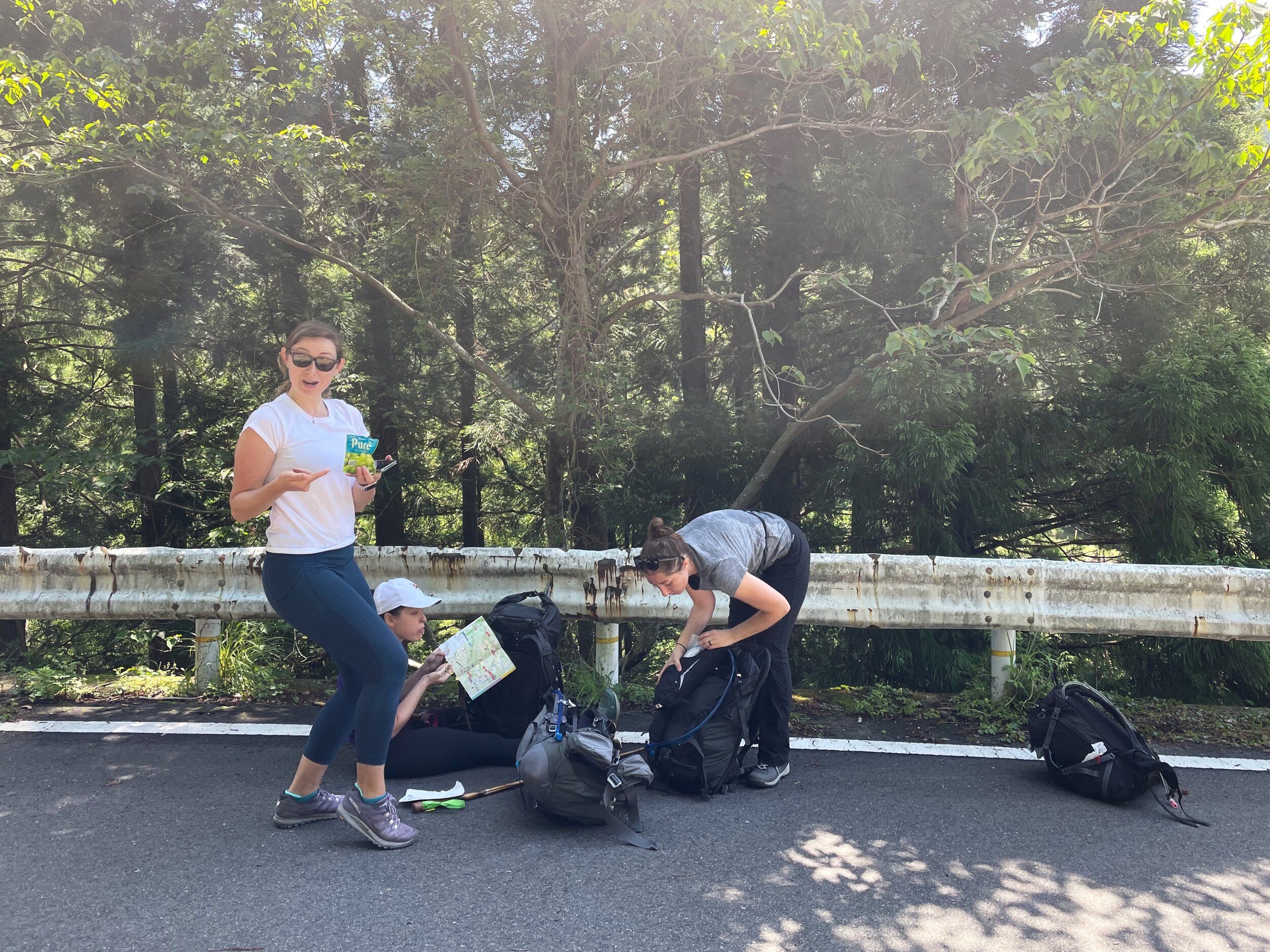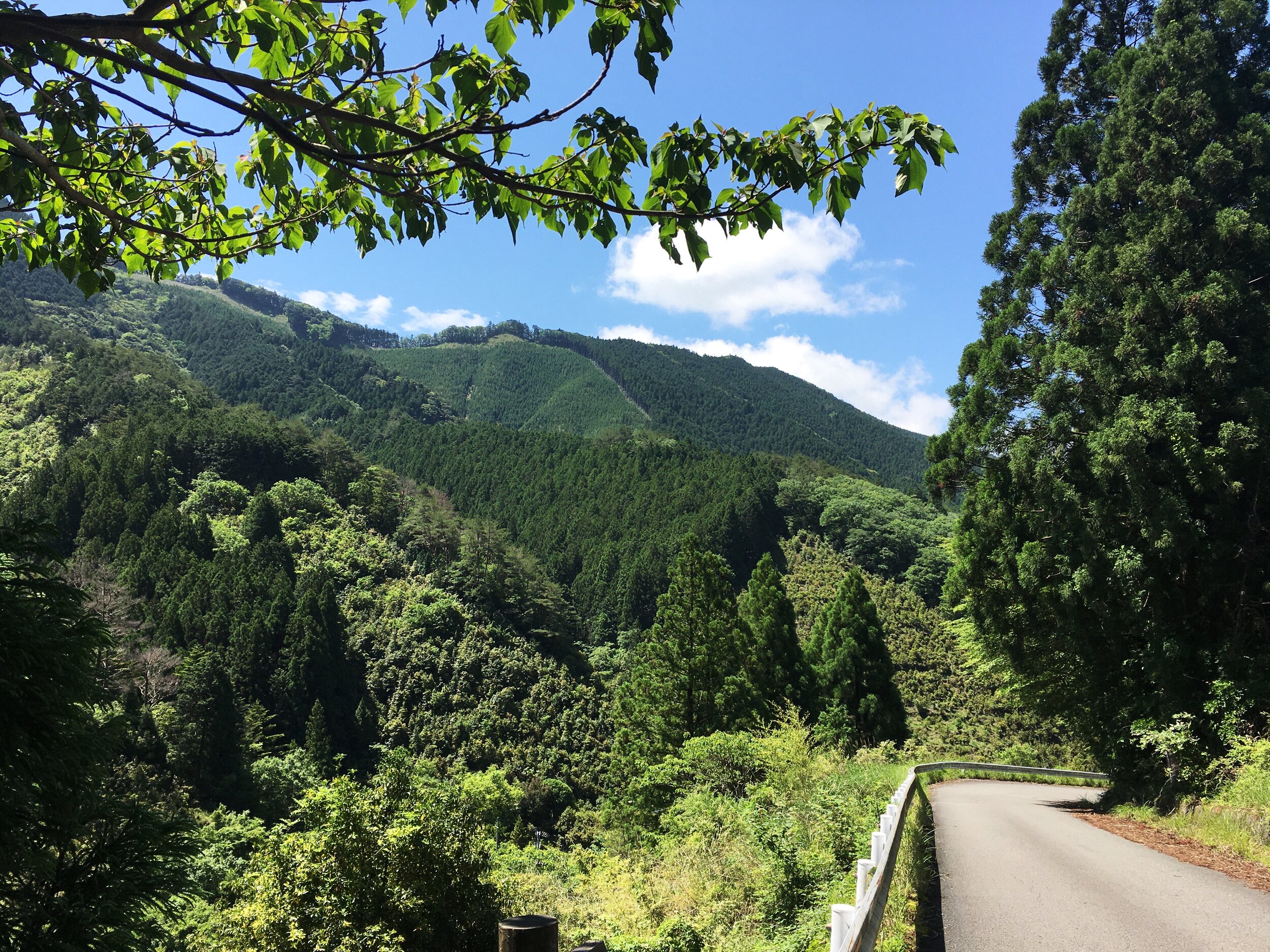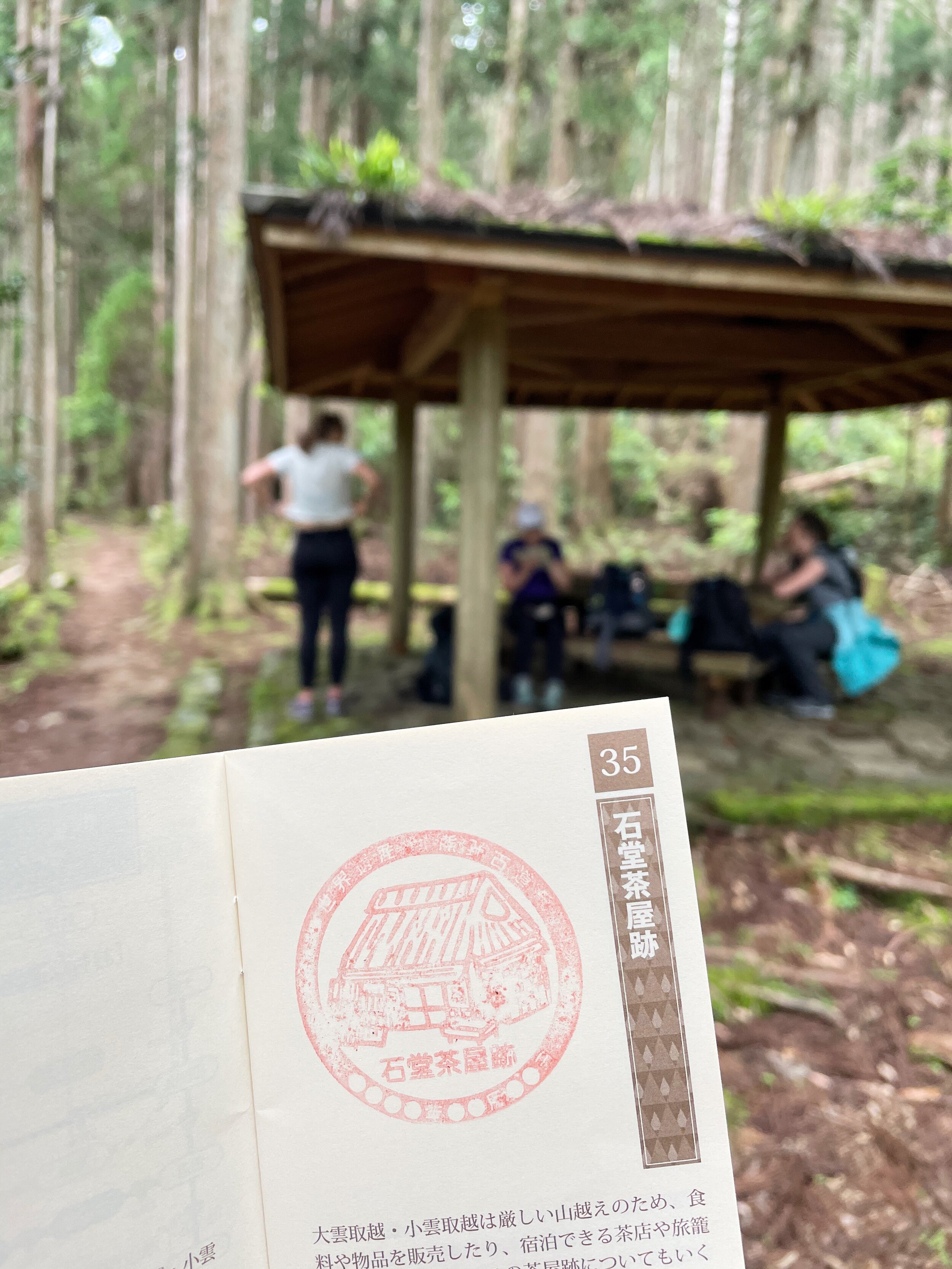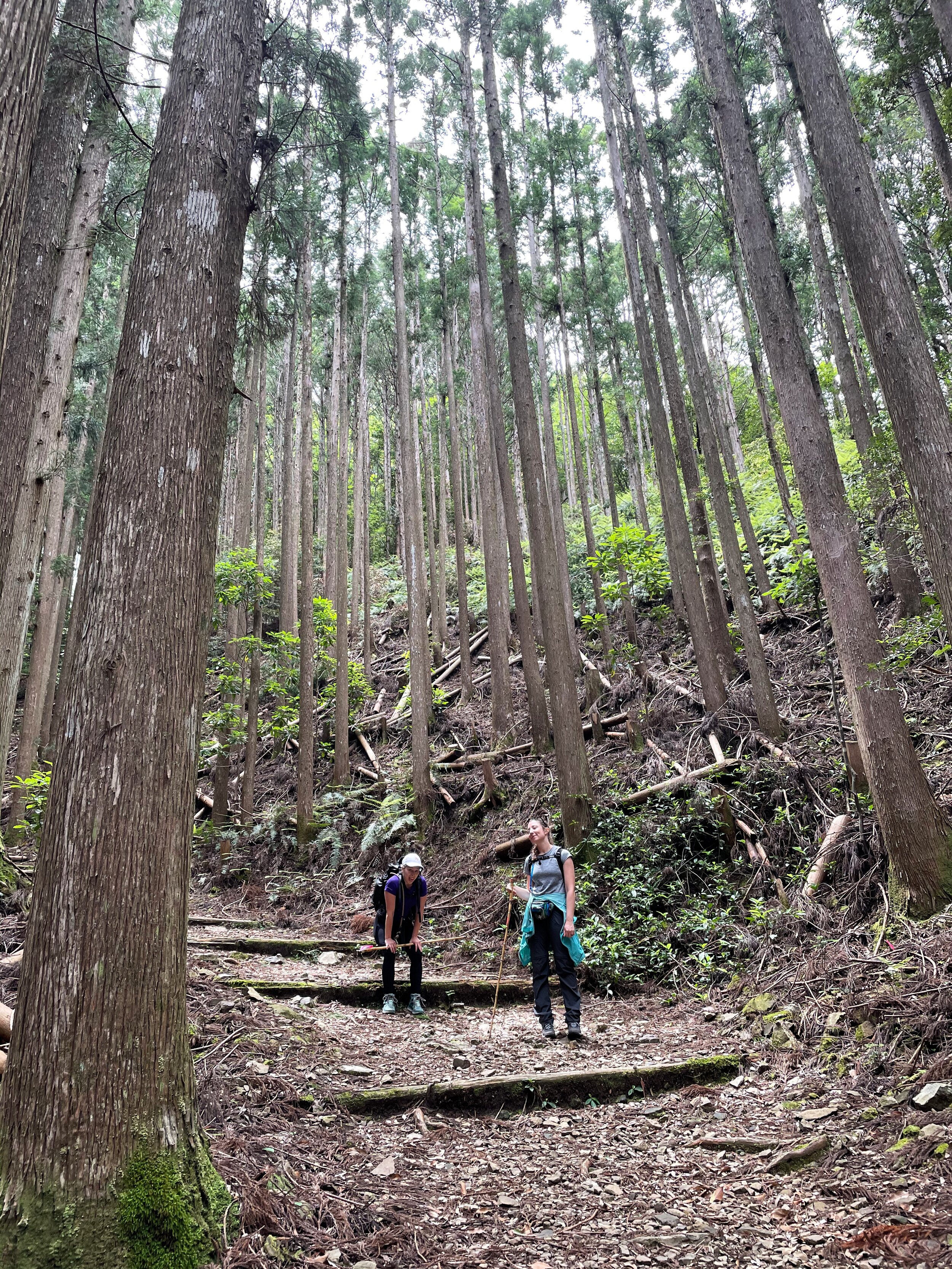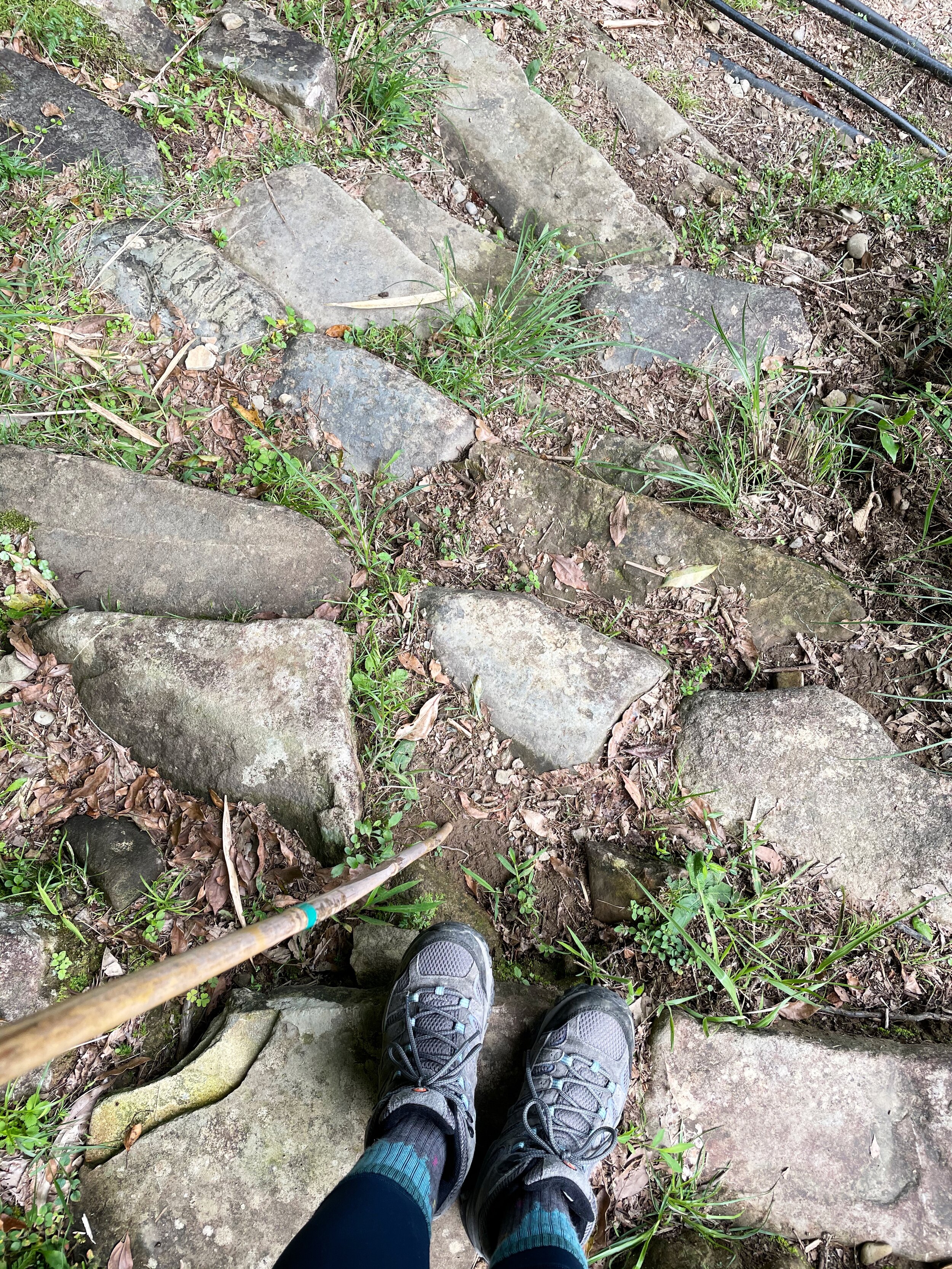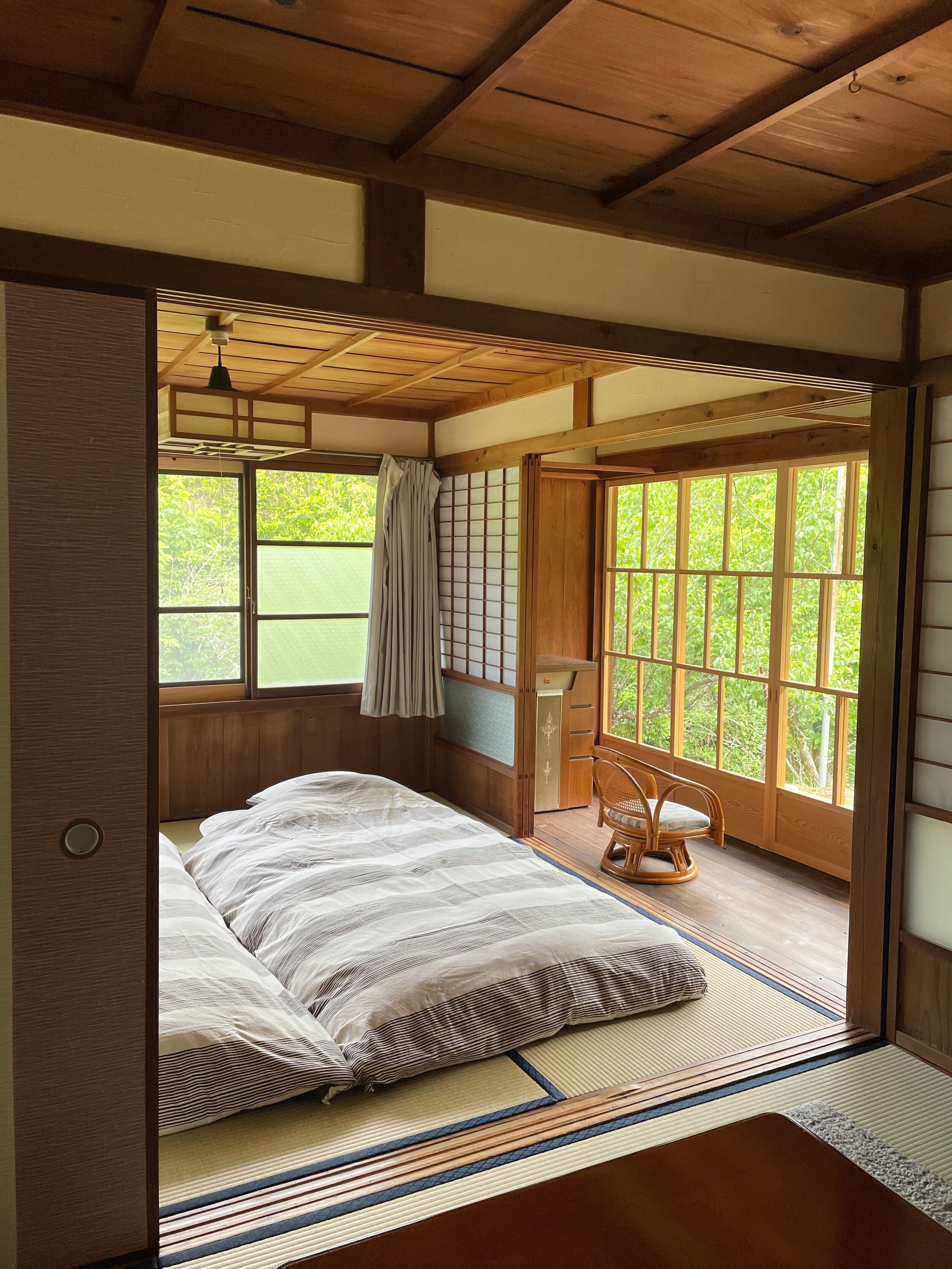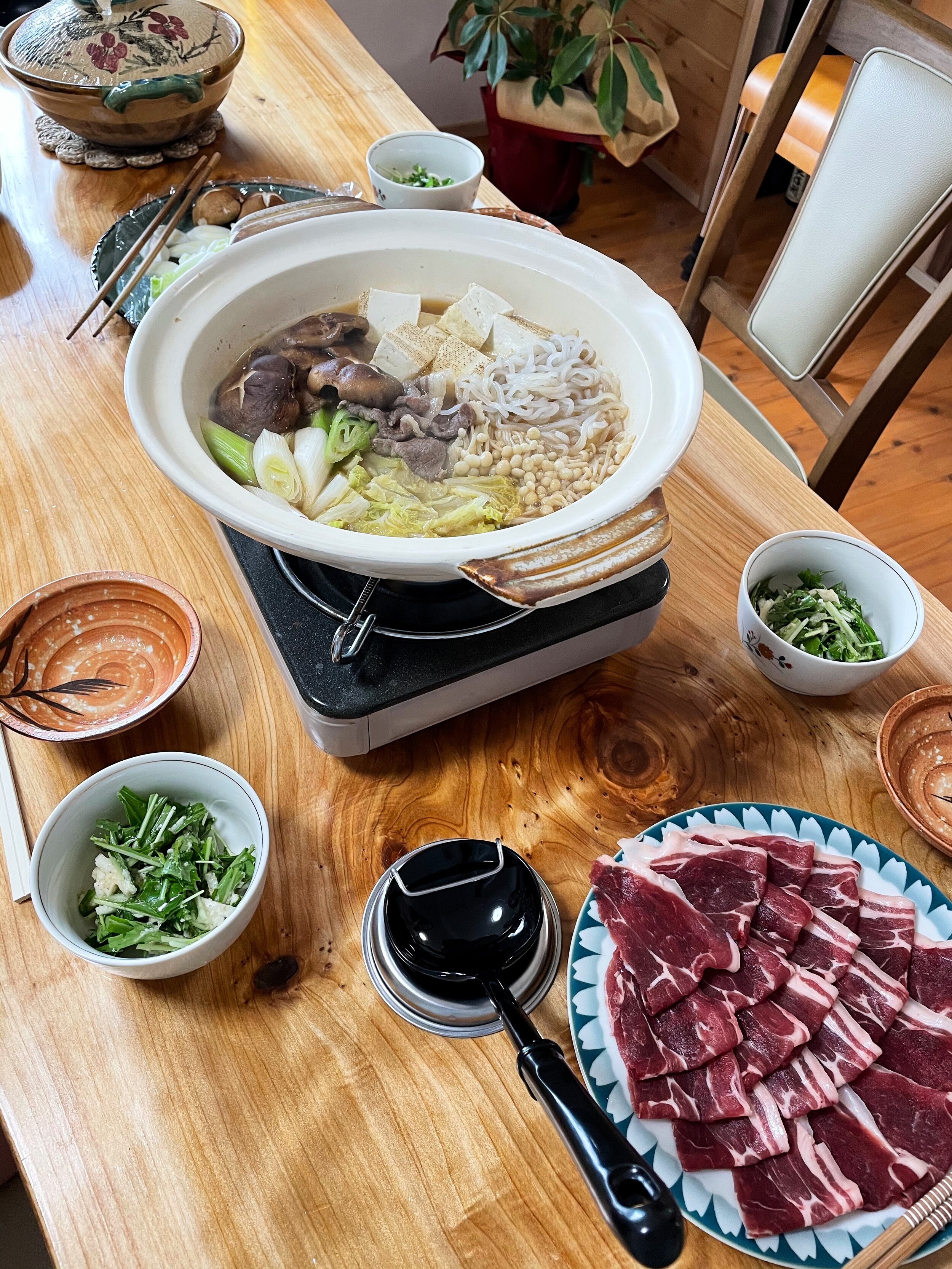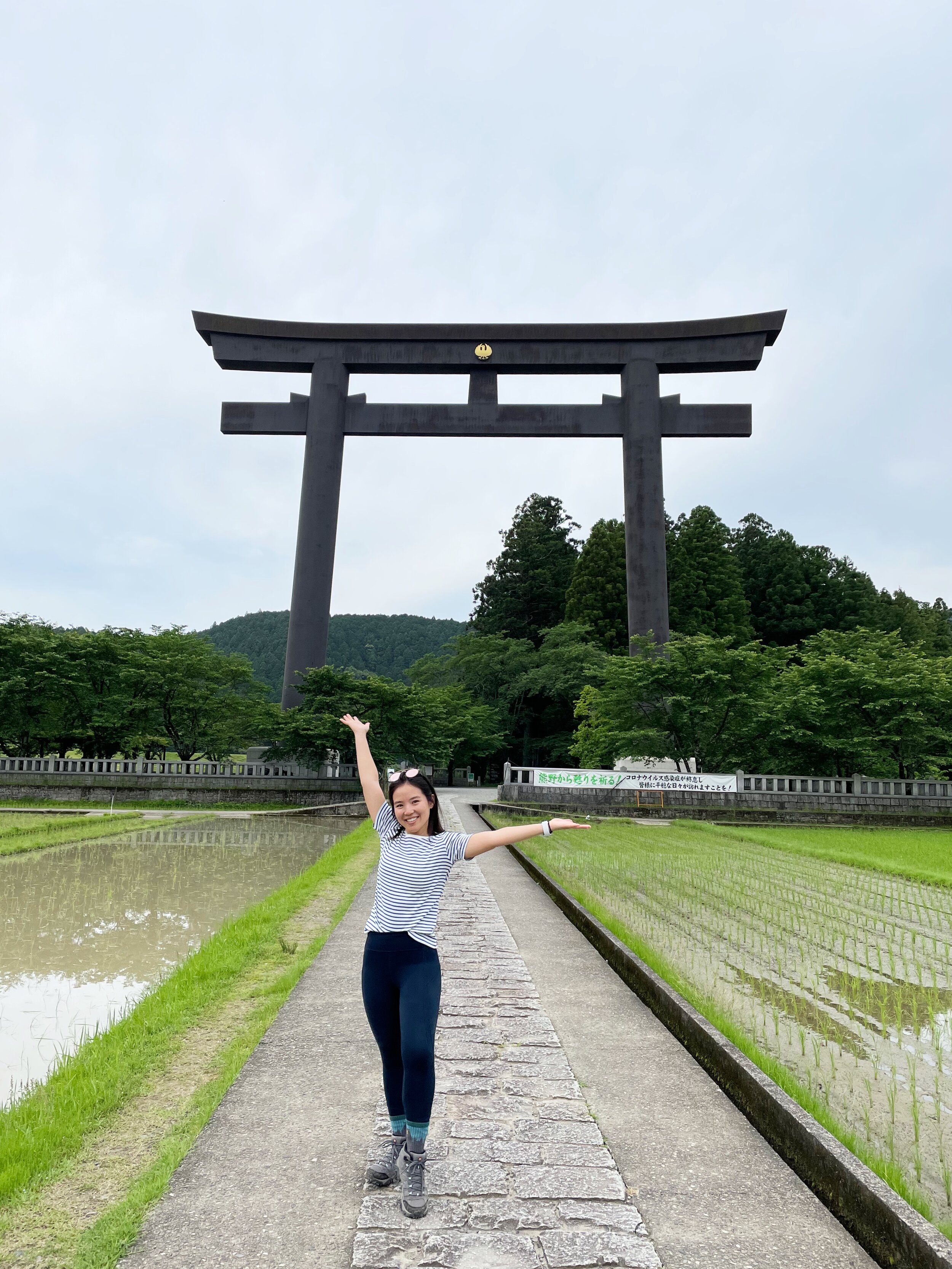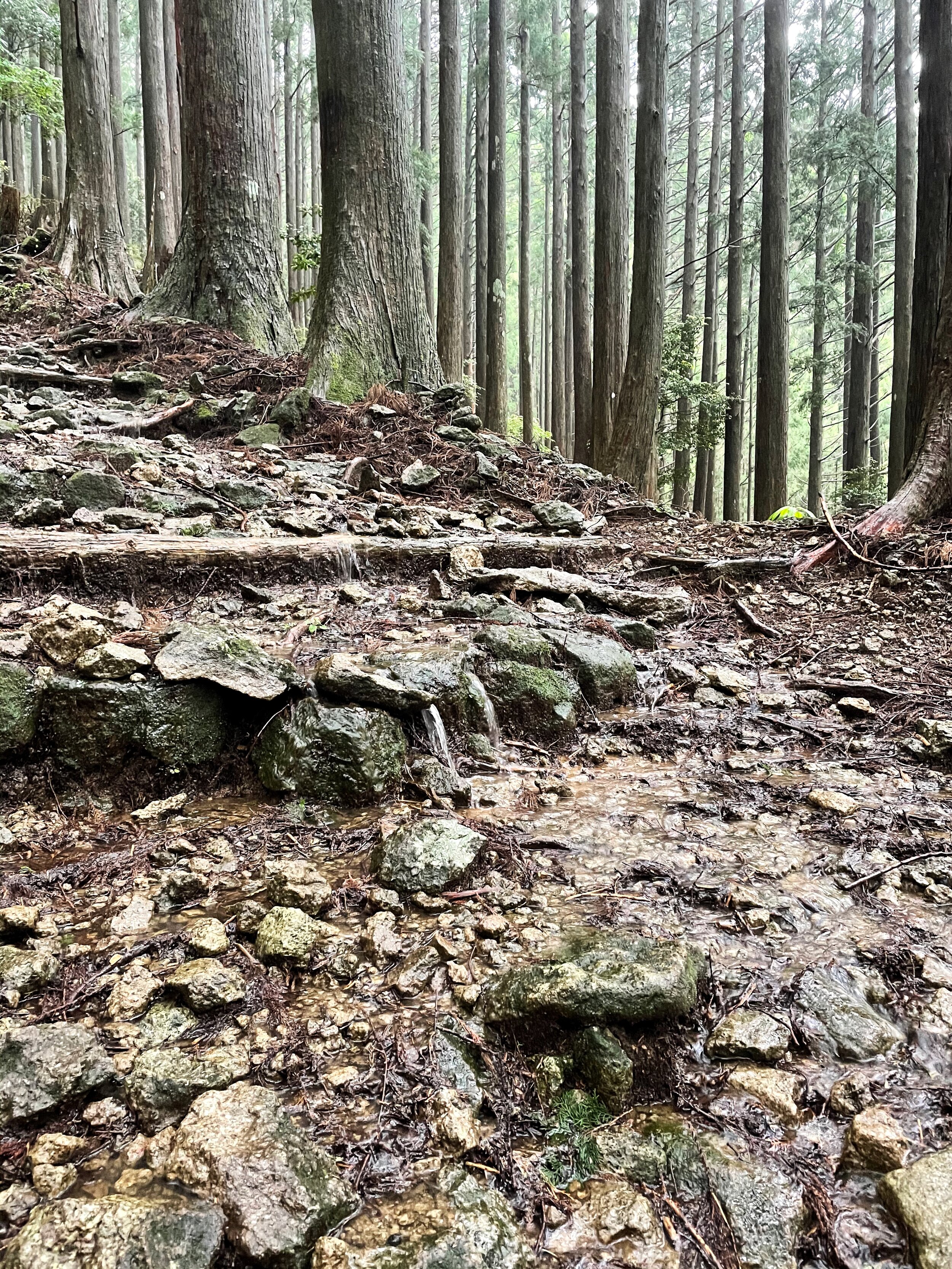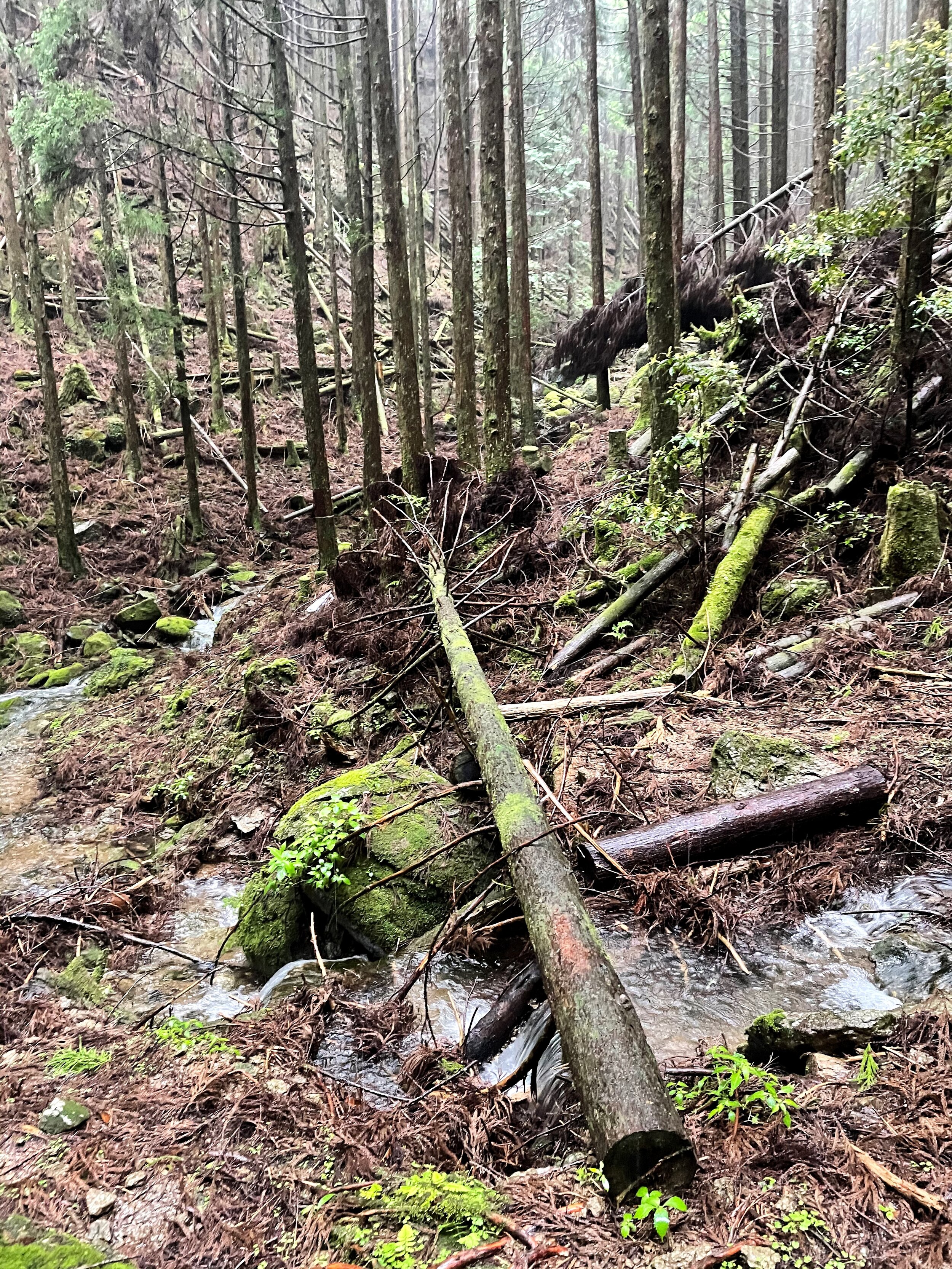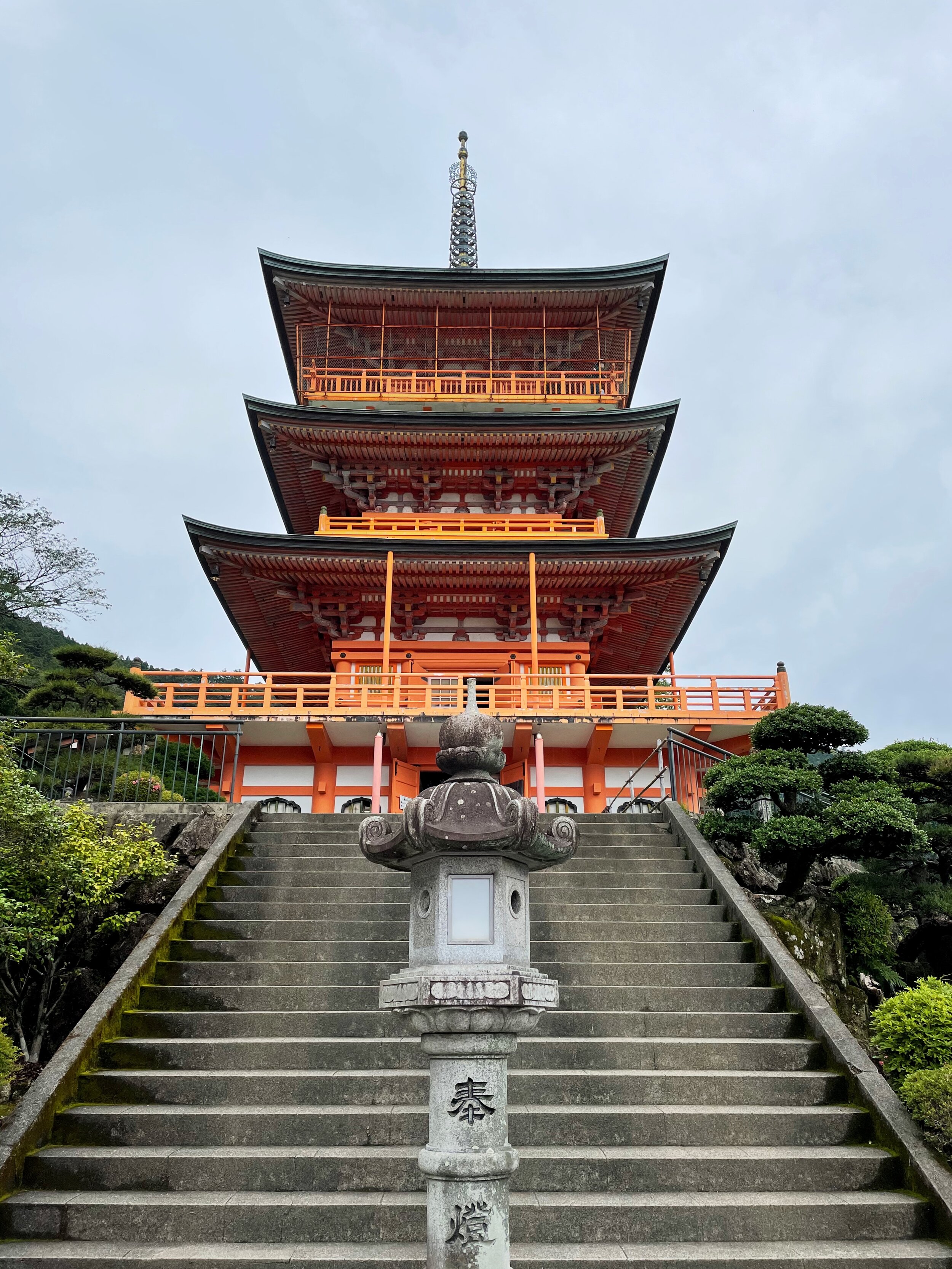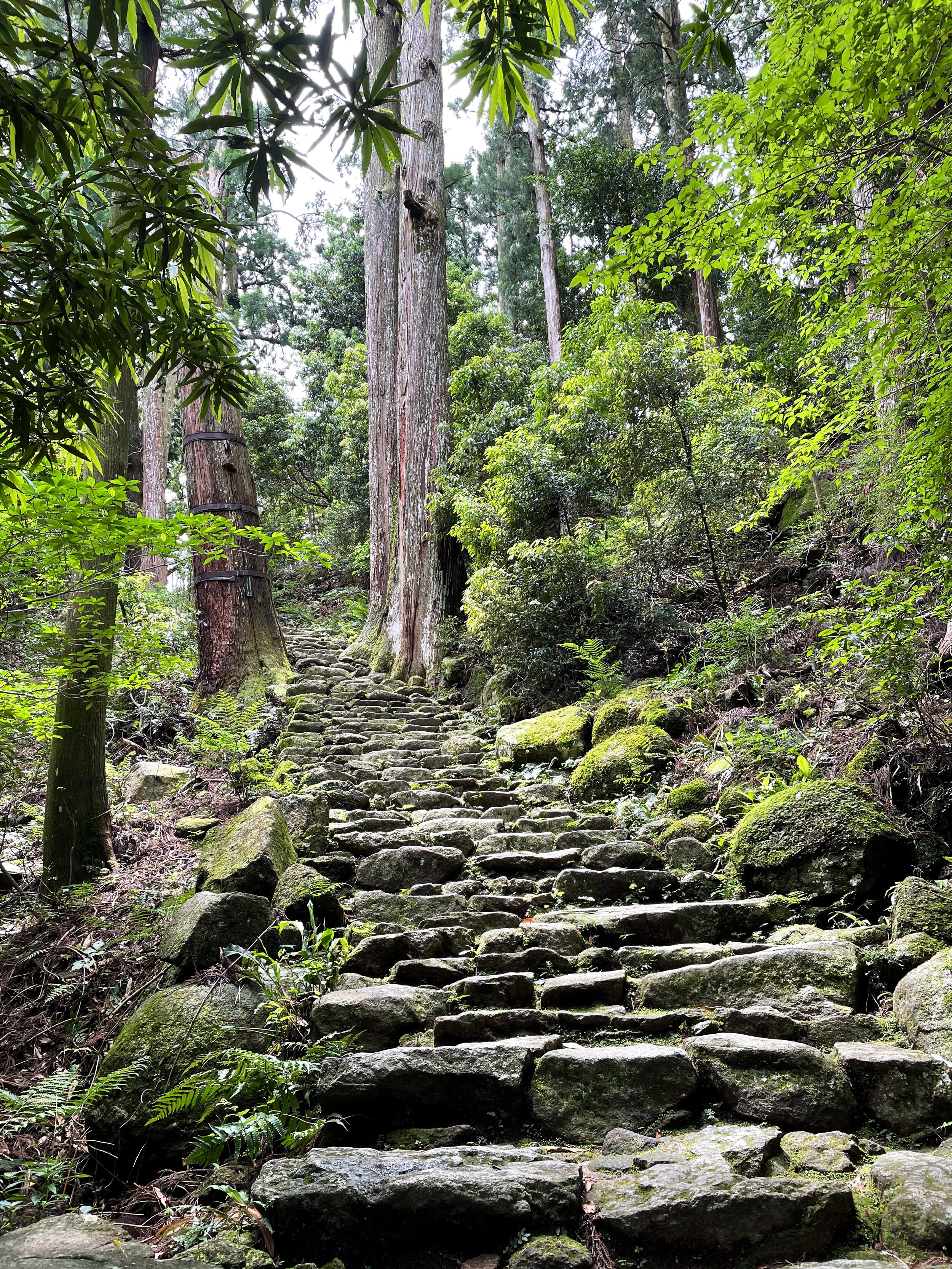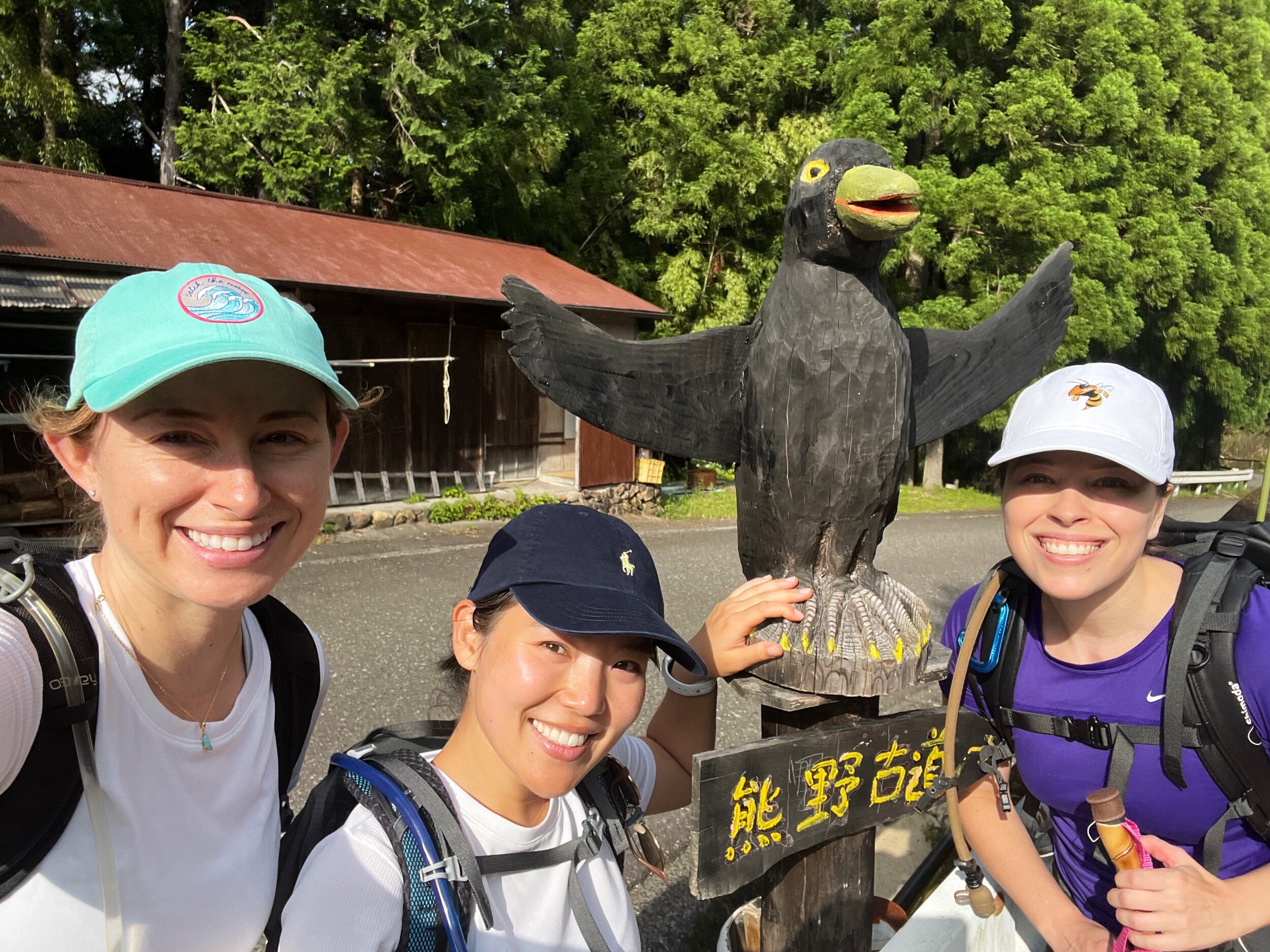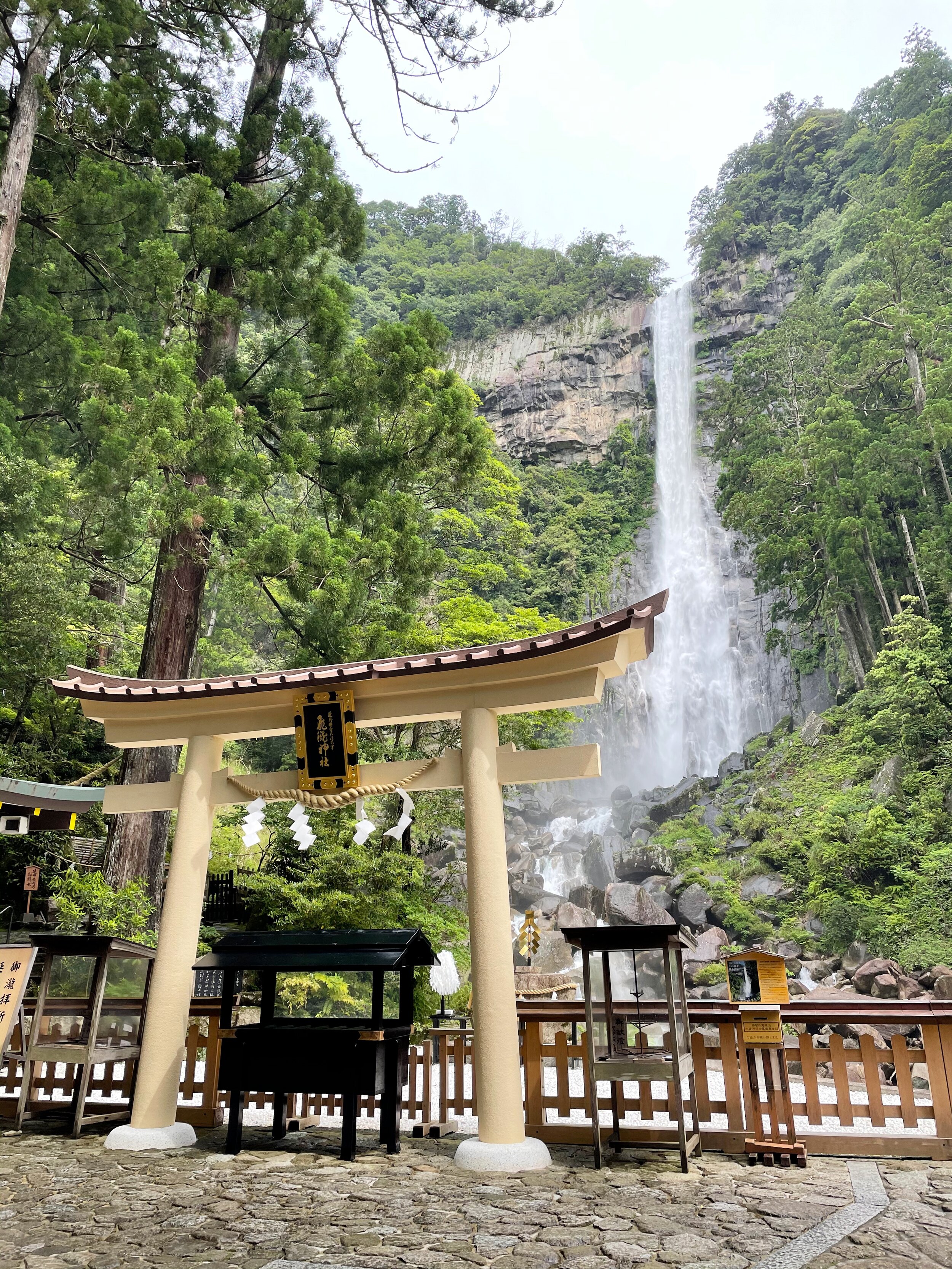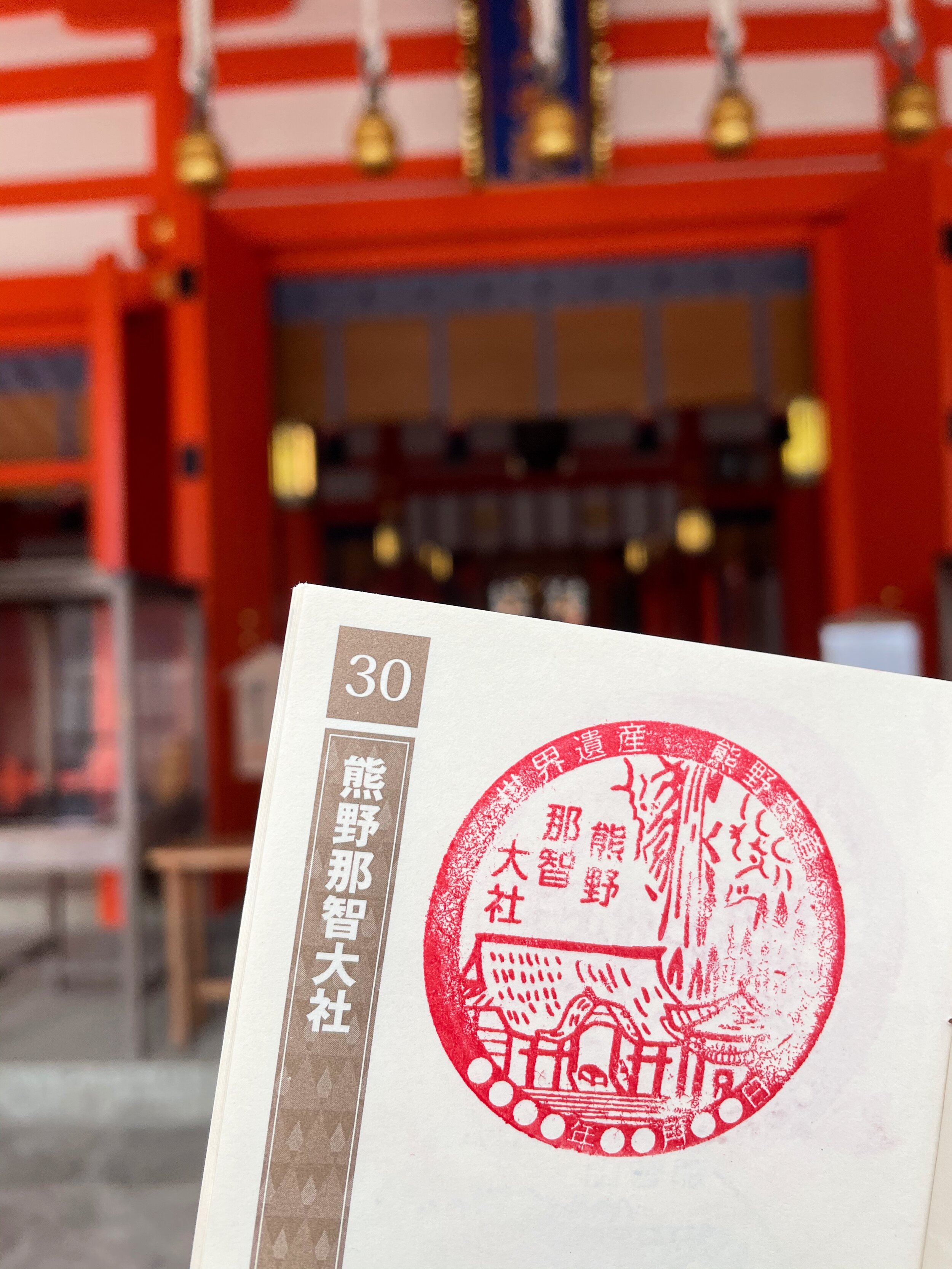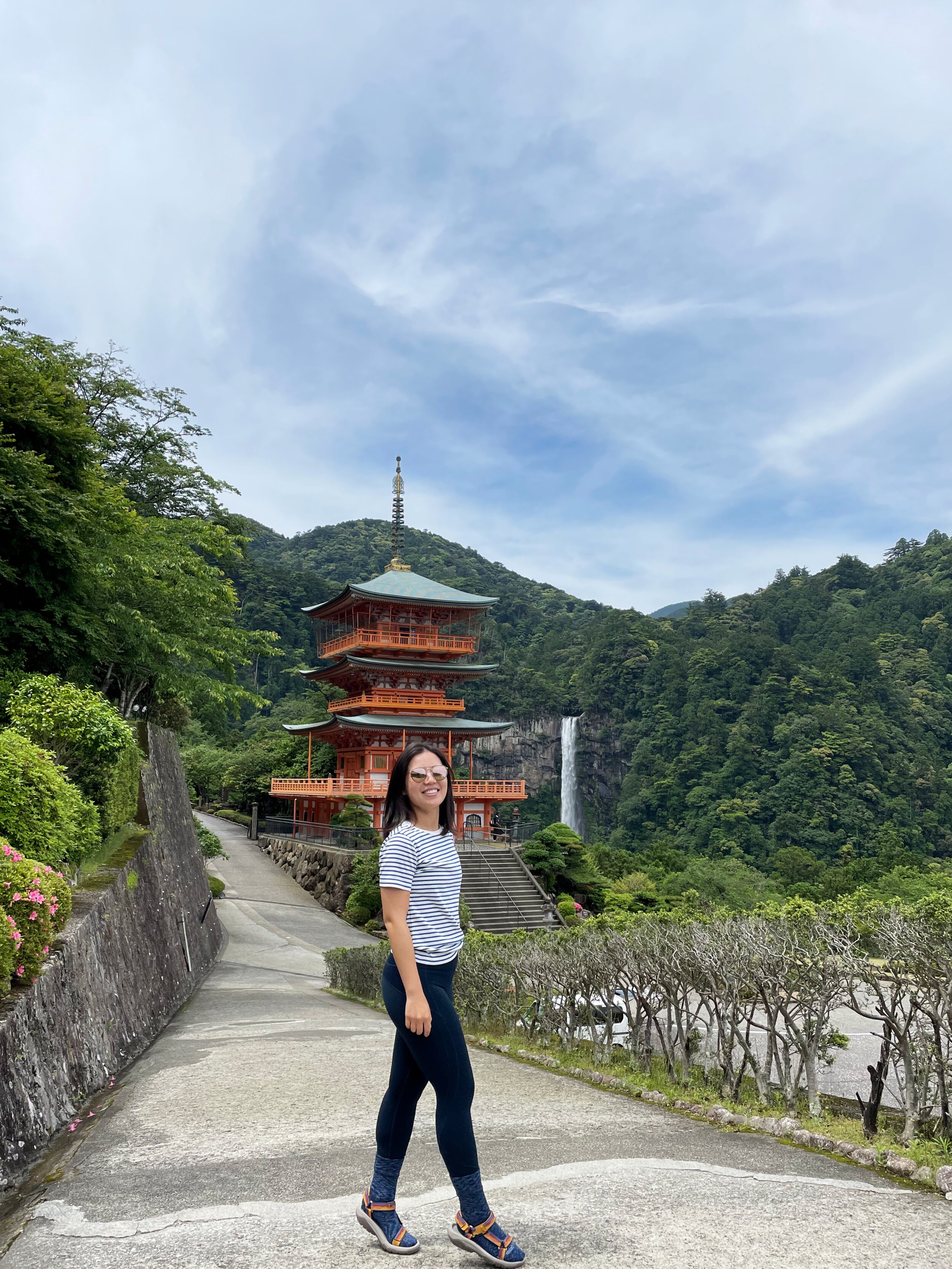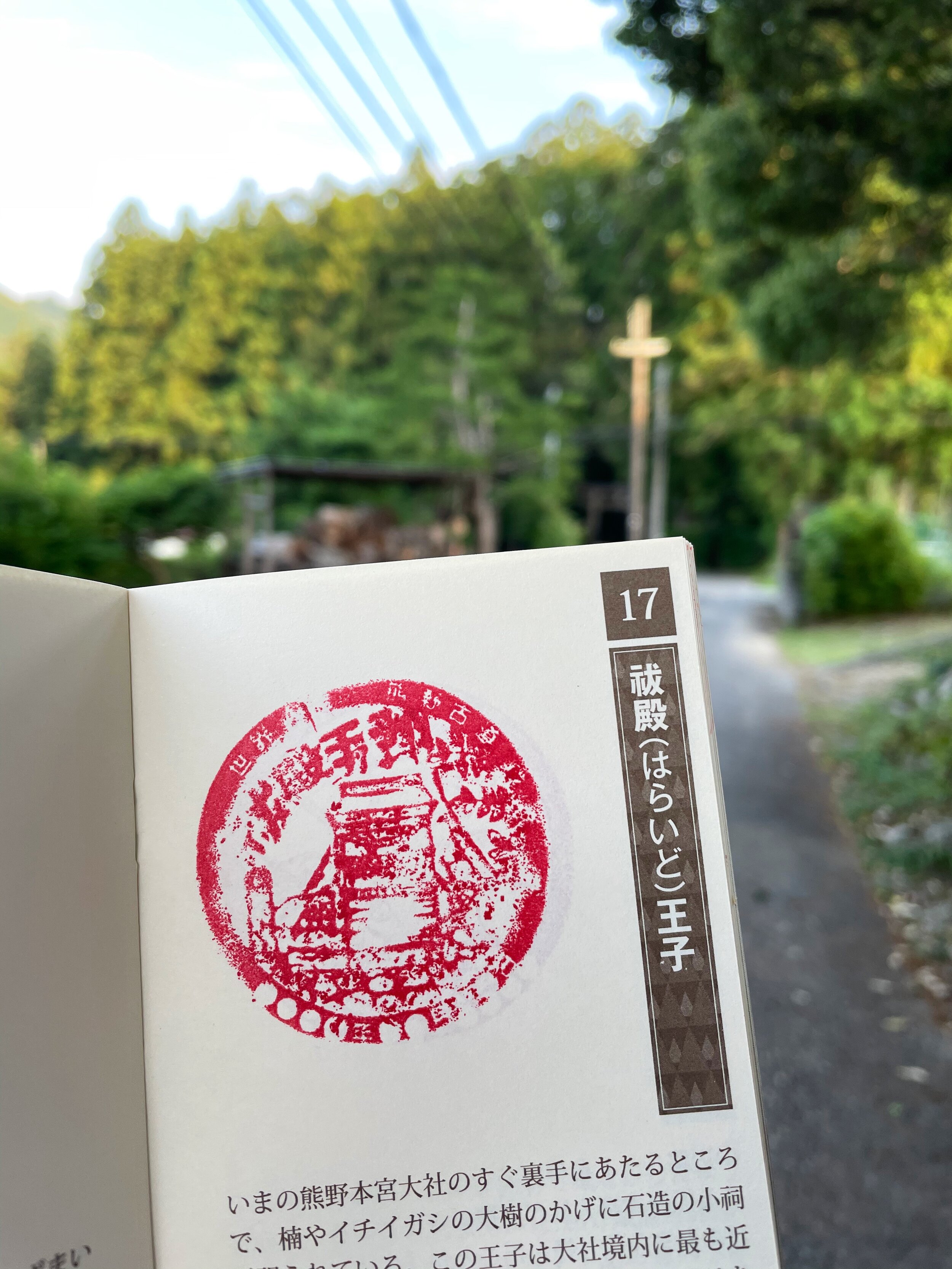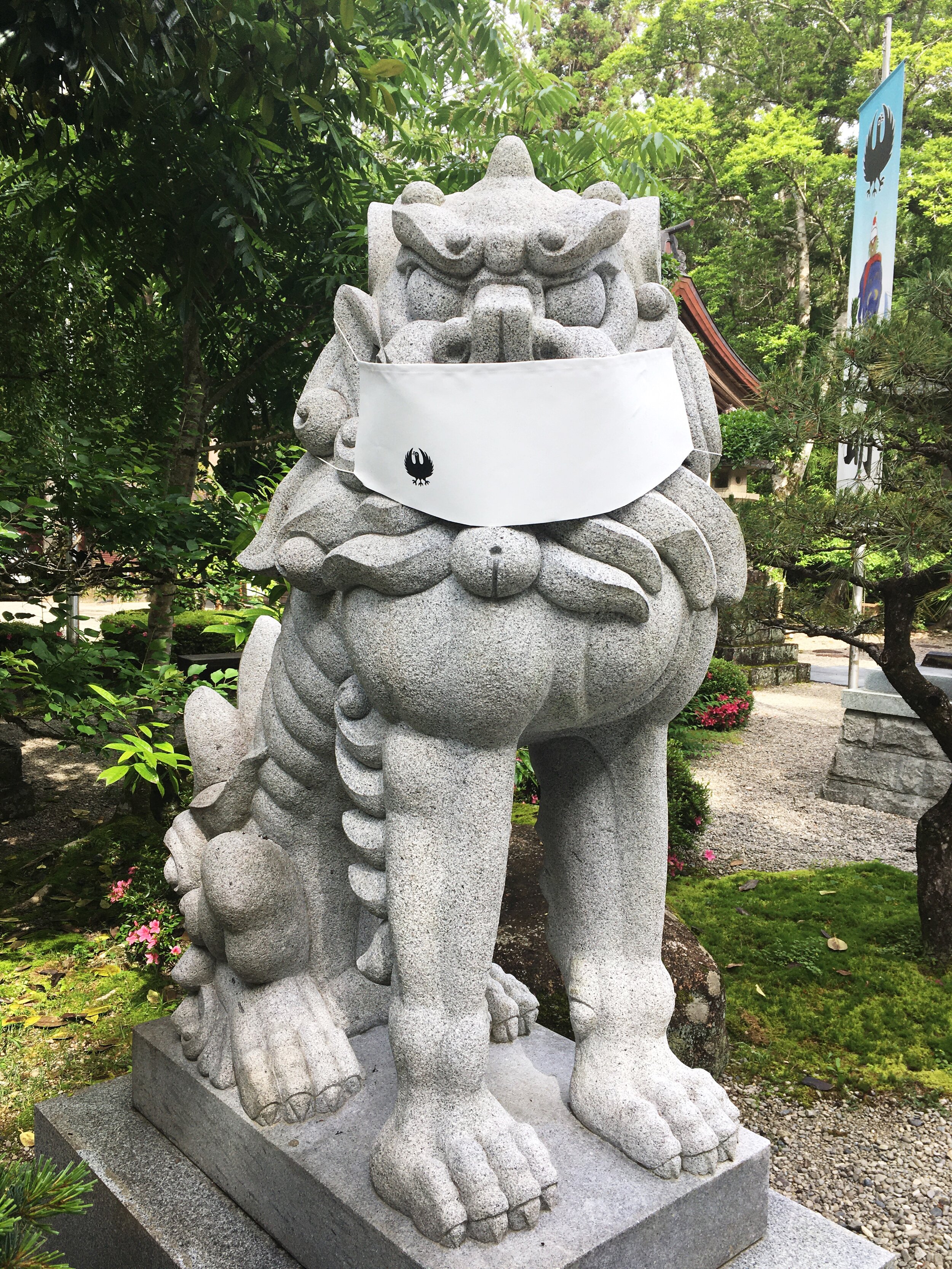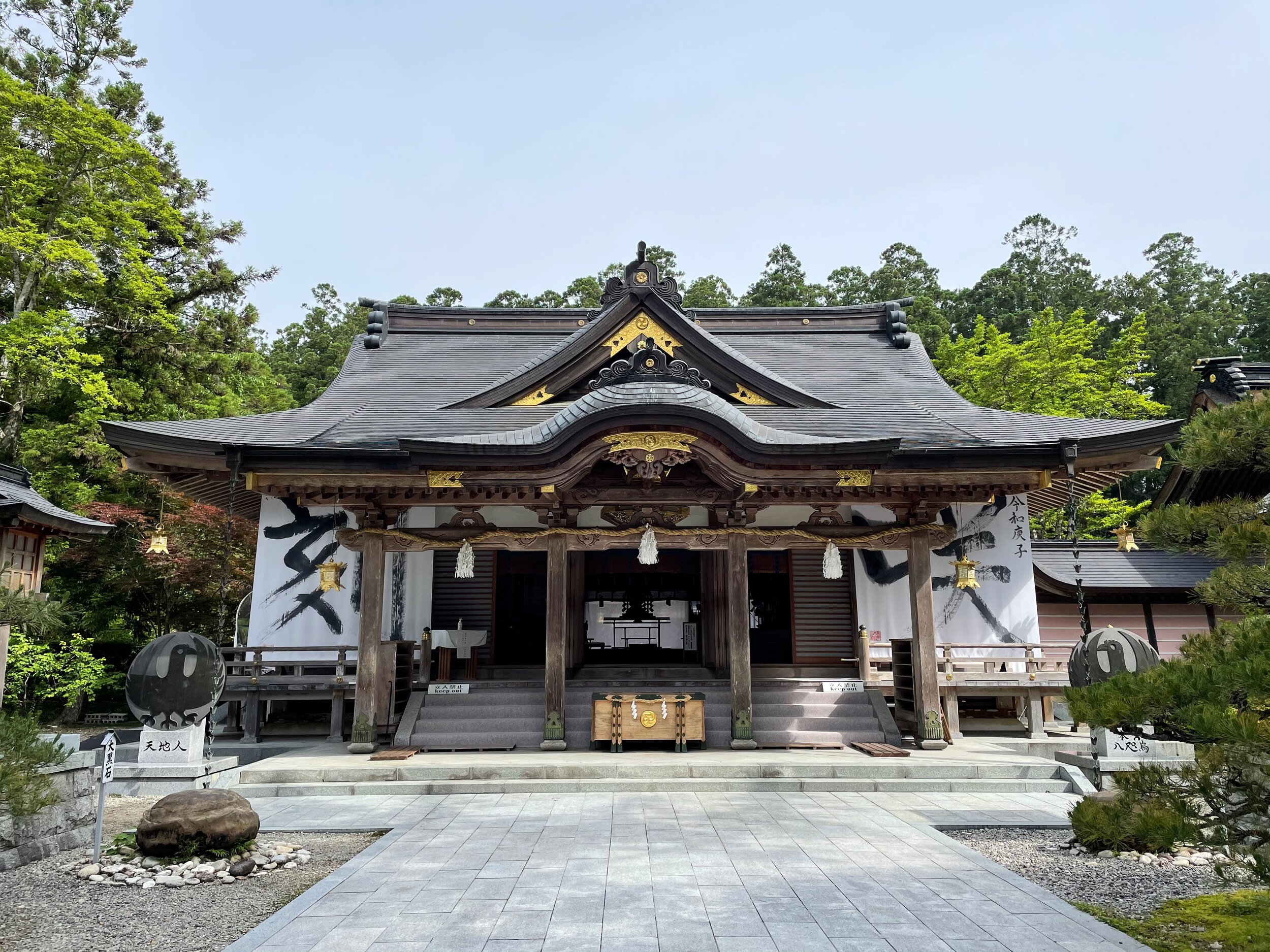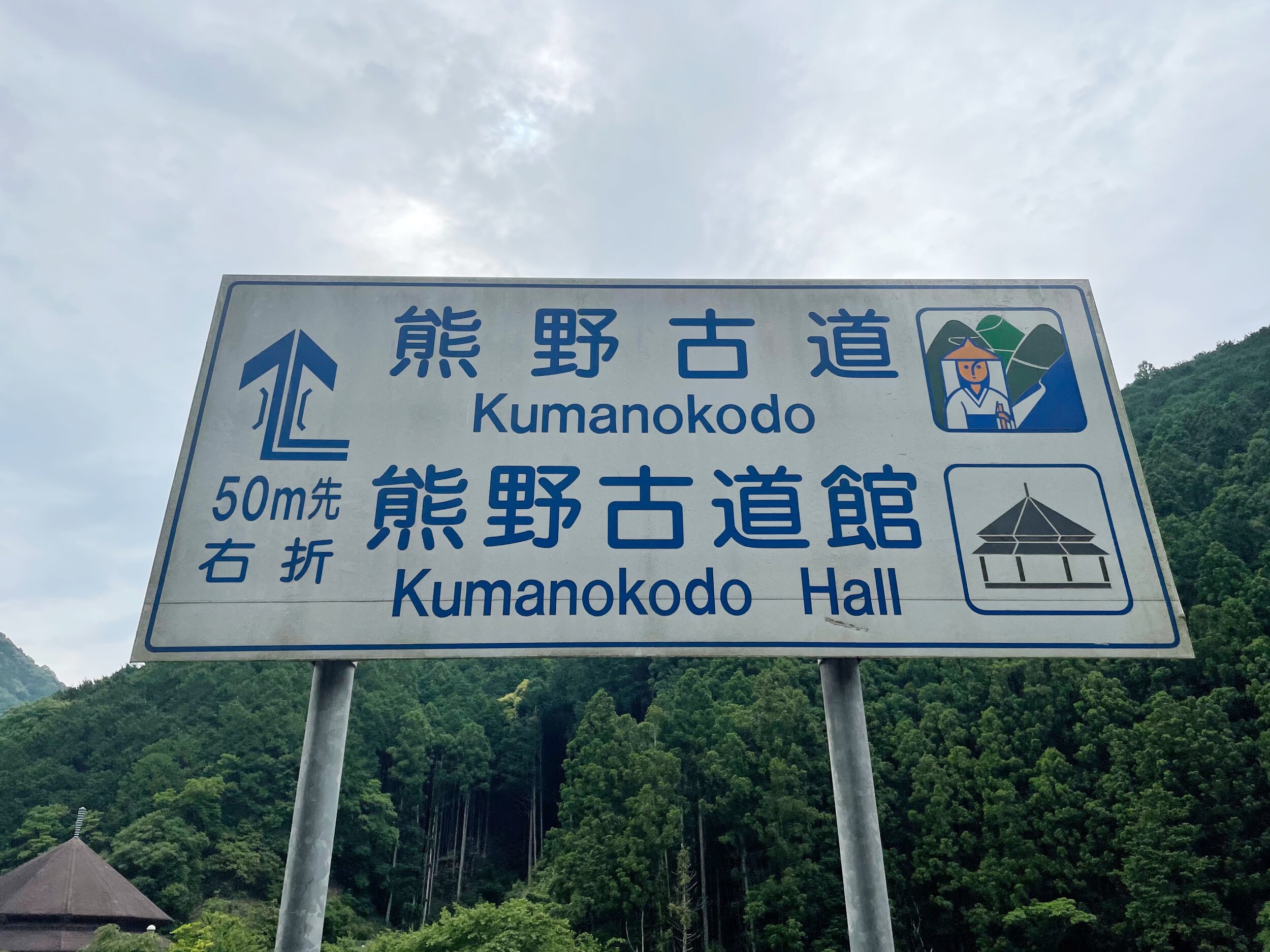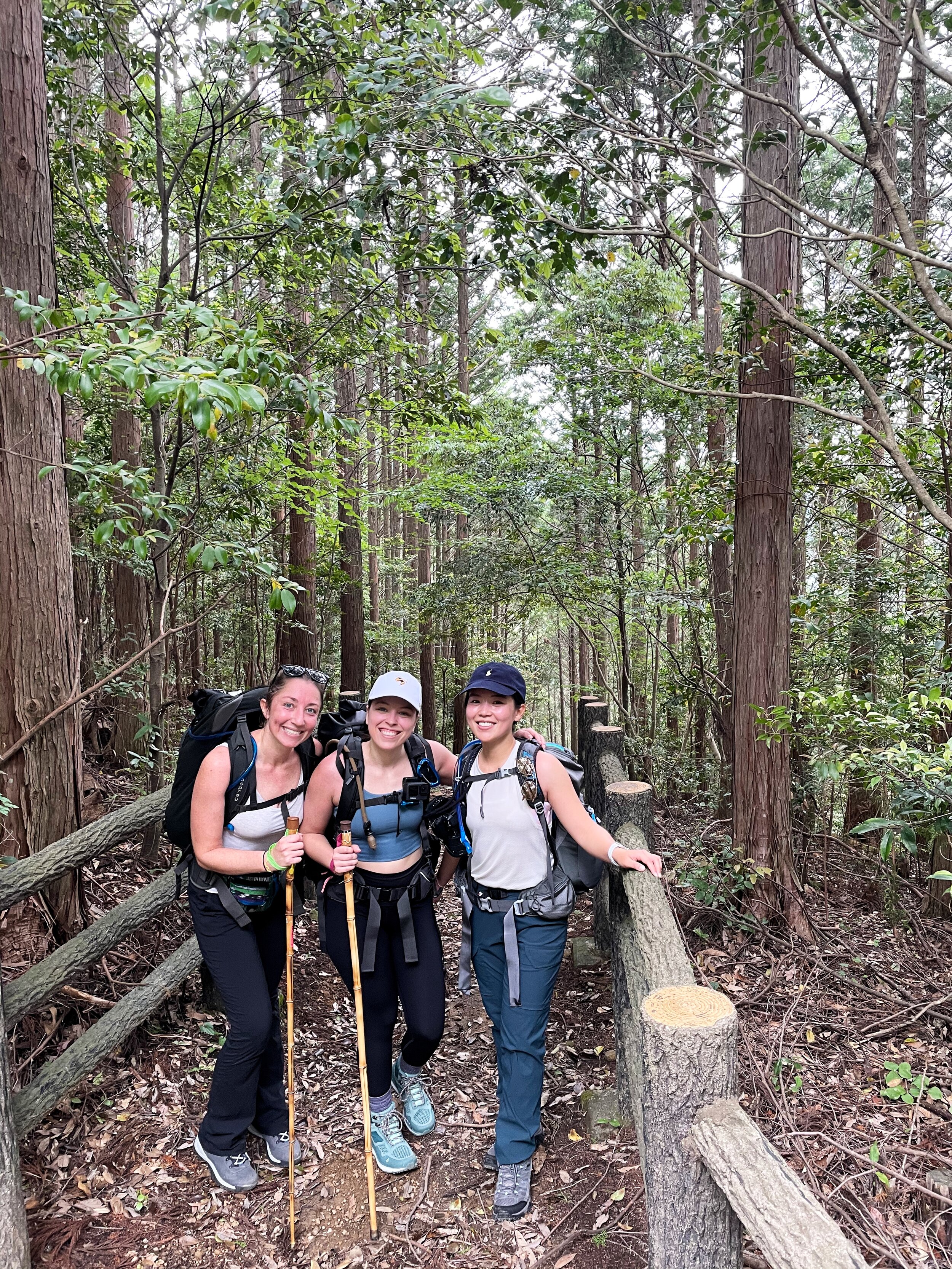Kumano Kodo Hiking Adventure
/This one is a long one, I want to thank you in advance for reading. I don’t know where to begin when it comes to this eventful Kumano Kodo journey. I’m thankful to the people who helped when we were suffering from hypothermia (yes we nearly died!). Grateful for my friends for shielding me from my #1 nemesis: snakes. Thankful to our hosts for their hospitality. And thank God for blessing me with my girls who are crazy enough to hike over 45 miles! Our next goal is to hike from Kyoto to Tokyo!
What’s Kumano Kodo?
Japanese Kumano Kodo and the Spanish Camino de Santiago are two of the world renowned pilgrimages traversed by many wayfarers every year, also they are the only two UNESCO World Heritage Pilgrimage Sites. You can receive a certificate if you complete both of these pilgrimages. Kumano Kodo stretches across Kii Peninsula, difficulty is medium to hard according to AllTrails. The full length of Kumano Kudo is about 70 kilometers or just shy of 45 miles. This pilgrimage started more than 1200 years ago during the Heian period (794 - 1185 AD), emperors and the imperial household trekked for 30 to 40 days from the ancient capital of Kyoto to Kumano Kodo.
Packing List
Like many amateur backpackers, we definitely overpacked. Everyday our backpack felt heavier than before.
Hiking Shoes: I got the Merrell Moab 2, very comfy, no blisters at all.
Backpack: Gregory Jade 28L Hiking Backpack, I love this backpack so much! Free float technology really helps lighten the weight.
Socks: a good pair of hiking socks will complement your hiking shoes! I brought 3 pairs, but one pair is sufficient. Most lodging has a washing machine.
Hiking poles: sold at tourist centers, also available for free rental at select lodging.
Hiking outfit: We brought more clothes than necessary. I think two tops and two bottoms are all you need! Wear your next day’s outfit as pajama the night before!
Cold-proof clothing: No need for those heavy down jackets, pack something light that will keep you warm. Kumano Kodo mornings in May can be quite chilly.
Camelbak: We each packed two liters of water in our Camelbak. Map would tell you there are water stations along the way, but the markings aren’t very clear.
Snacks: We packed foods that we like such as nuts and protein bars (roughly two bars per day). We also bought some onigiris and sports drinks near our lodging.
Poncho, waterproof jacket, waterproof backpack cover: Must bring items! Can’t stress this enough!
Camera, memory card, and charger
Sunglasses, sunscreen, hat, bug spray, and hand sanitizer
Headlamp: Didn’t get to use it this time, but certain parts of the hike can get pretty dark, even in the middle of the day.
Hiking first aid kit
Waterproof dry bags: I used UN’s military grade dry bags, and put my clothes and gadgets in them to keep them dry on rainy days.
Toiletries: Our lodgings provided shampoo, conditioner, and body wash. But I still packed some of my own routine care products.
Teva/Choco: Let your feet relax in something comfortable at the end of the day!
Prior to the Trip
We didn’t really do any preparation for this trip, only kept up with the regular exercises such as HIIT, running, weightlifting, etc. But if I could do it over, I would climb stairs with my hiking backpack.
How to Improve Our Trip
Not bragging, but our trip planning was flawless! It’s so stress-free to be blessed with the most detail-oriented hiking buddies. Everything was planned down to the T, including routes and equipment.
Accommodations
All of our lodgings were five stars! Our hosts prepared delicious foods for us, and shared useful information about hiking in Kumano Kodo.
First night (Tanabe): Next to a convenient store and train station.
Second night: (Tanabe): Close to Kumano Kodo trail, very clean, and our host prepared generous portions for breakfast, lunch and dinner. Has washing machine, so we could wash our clothes after the hike.
Third night: (Shingu): Our host is a professional hiker, he used to take groups through Kumano Kodo before the pandemic. The lodging has all hiking equipment and supplies you need. He even extended the business hours at the restaurant so that we could finish eating. After our meal he took us to an onsen/public bath place. The next day he even dropped us off at the trailhead.
Fourth night (Shingu): My favorite Airbnb! Wish we could stay here longer. Our host treated us to a wild boar hot pot, a perfect way to reward our tired bodies and feet, truly a medicine for the soul!
Fifth and sixth night (Nachikatsuura): A super wet and scary day, our host came out to get us. Turned out he’s friends with the host of our fourth night stay.
Day One
Upon arriving in Osaka, we hopped on a train for two hours to Tanabe (fare was 4480 yen). Tanabe was quiet, especially at night, and only a few stores remained open due to the state of emergency. There is a Kumano Kodo tourist center where you can purchase a stamp book to document your pilgrimage, and also gather information about the different routes.
Day Two
15km 6-8hrs
First day of hike! After breakfast, we took a bus to Takajiri. Stopped by the visitor’s center to buy our hiking poles and fill our canteens prior to the start of our trek. The trail was more difficult than anticipated. The seemingly unending uphill climb with full gear on our backs had us gasping for breath. But I love the challenge and the endorphin that it brings. But how come the YouTube videos I watched said this trail is not difficult?
Day Three
25km 9-12hrs
The longest day of our hike, but also the happiest! Maybe we were delirious from exhaustion, we laughed uncontrollably at almost everything. We were the only hikers en route that day, there weren't any other groups who we could share hiking knowledge with, and no one to give us tips about the trail ahead, but we had each other. Saw a snake, and if it wasn’t for my friend helping me get past the snake, I probably would’ve broken down then and there. What we originally thought was an easy two kilometer downhill trek turned out to be full of slippery rocks. Our knees took quite a toll! Our host that night took us to an onsen. The warmth and the scent from natural hot springs rejuvenated our tired bodies.
Day Four
13km 5-6hrs
We visited two well known touristy spots, Otorii and Kumano Hongu Taisha. Otorii means big torii gate in Japanese. This place houses the largest torii gate in Japan, true to its namesake. We were interviewed by a local news station there, and the coverage even caught the eyes of our last day’s Airbnb host!
Before coming on this trip, UN asked me why I don’t want to use luggage service. Stubborn as I was, I didn’t think it was necessary. But then we discovered that luggage service is quite reasonable, costing about $15 for a 30L backpack. We organized things that we didn't immediately need for the next two days into a backpack and shipped it to our next lodging. After sightseeing and packing, we resumed our hike. Compared to the last two days, this third day was relatively easy. We even saw one other hiker on the trail! We arrived at our stop at 3pm, leaving us plenty of time to rest and recover, as well as facetime with our families. There is fresh mineral water here. We were surrounded by mountains, rivers, and farms, and the breeze passed through the window and caressed our faces that put us in a complete state of relaxation. The best part was the shabu shabu dinner!
Day Five
15km 7-9hrs
Unsure if the sound that woke us up was from the river streams or from the rain, but it felt relaxing to stay in bed. Little did we know we had the most perilous day ahead of us. In the downpour, our host repeatedly confirmed if we still desired to complete the rest of Kumano Kodo. Having already accomplished 75% of the trail, we weren’t about to give up. Afterall, we had on our rain gear for a reason. In the beginning, we weren’t worried for our safety, hiking in the rain felt very refreshing. The three of us (my friend E made the wise choice of taking the bus) didn’t miss a stamp even in rain, we were happy campers. But as the rain started to come down heavier, the leaves of the trees stopped providing shelter for us. The rain got us completely soaked. Our feet felt weighed down, our bodies cold and weak despite having had a generous breakfast portion. We took out our energy bars, but our hands were shivering so much we could hardly open the wrappers. The dirt trail disappeared into rapid streams of water. The only thing on our mind was getting to our next destination as fast as possible. Our host told us a shortcut that would save us a couple of hours, it was blocked off but was recently repaired. We took the blocked route uphill, but when we got to the top, what we saw scared us: a half repaired slippery path, trees fallen all over, and the only walkable path submerged by flash flood. We wanted to turn back, but we have passed the halfway mark. We made the decision to move forward. Drenched and freezing, trapped in an unmarked trail with toppled trees, we searched for caves or any covering along the route for some temporary shelter from the rain. We could use our emergency blanket if we hadn’t so confidently (arrogantly) put it in our shipped backpack. Our survival instinct kicked in, we thought of filling empty water bottles with urine to keep warm, or stuffing fern into our shirts. When we got past the slippery path, we came upon a public restroom. The three of us hugged each other for warmth. Just then, we heard and saw a logger walking by. We flagged him down and begged him in our broken Japanese to give us a ride. He showed us compassion and took us to the next bus station at the foot of the mountain. I don’t know where we would be if it wasn’t for him.
The bus came quickly after the logger dropped us off at the bus stop. We hopped on immediately without thinking much about where it was going. Luckily, this bus was headed to the city that we needed to get to. Soon as we got off the bus, the vendors at the train station saw how defeated we were and handed us towels. A taxi driver even took us to the nearest public onsen so we could clean ourselves off. Nothing felt more comforting than the moment we got into the hot bath. I’m so grateful that God kept us safe and provided help when we needed it the most. Lesson learned: appreciate the beauty of nature, but force of nature is not to be underestimated or challenged.
Day Six
We got to enjoy Wakayama on our last day, but we walked so much! (My Apple Watch kept telling me I broke my personal best). If you ever visit Osaka, I highly recommend you make a trip to Wakayama. It is only 2 hours by car and has many beautiful places to see. Next time I’m coming back for the log rafting in Dorokyo Gorge.
Kumano-Nachi Taisha
Seiganto-ji
Nachi-Taki Waterfall: One of the three biggest waterfalls in Japan, a can’t-miss spot when you come to Wakayama.
Nachiyama Three-Story Pagoda: Guarantee you will pick up your camera immediately when you arrive here. Keep climbing and you will be able to capture Nachiyama Pagoda and Nachi-Taki Waterfalls in the same frame.
Kumano Hayatama Taisha
Kamikura Shrine: Watch your steps here, the stoney steps will give your thighs quite the workout. Every February they have a fire festival here. There would be men running down from the shrine holding a fire torch in their hand, I wonder how they don’t trip.
This trip was probably the most fun and memorable trip I’ve ever gone on in Japan! At the writing of this post, all of my emotions and excitement came rushing back. How I long to be embraced by nature again. Many say that Kumano Kodo is a spiritual holy ground, I think there’s some truth to that. I have zero regret about coming on this trip!
Chinese Translation
泡好茶,放下手邊事物,這篇超長,請慢慢享用!我終於寫完這篇太精彩到我不知道該從哪裡開始的熊野古道!太多事發生,思緒無法一次弄清,但首先我要感謝我的朋友們當我們遇到蛇時,幫我這超怕蛇的膽小鬼逃過一劫。是的,我們遇到蛇們(沒錯,複數蛇)。再來,我要感謝當我們在身體失溫時幫助我們的人(你沒讀錯,我們差點死在山上)。我還要感謝神讓我找到這群朋友,一起經歷生死,一起爬山時笑到像瘋子,一起用雙腳走了超過70公里的路,一起做了一件大家無法理解的事!下次我們一定要挑戰從京都走到東京!
熊野古道?
日本和歌山縣的熊野古道和西班牙的Camino de Santiago是兩大有名的巡禮路,也是兩條唯一列入UNESCO的路線,完成兩條巡禮路還能拿到證書呢!熊野古道橫跨紀伊半島,難度為中上偏難(All Trails評分)。熊野古道全長70公里,擁有1000多年歷史,皇帝到朝拜的民眾們都走過熊野古道。2004年時熊野古道正式列為聯合國教育世界遺產。
裝備清單
和很多剛接觸背包客形式爬山的人一樣,我們一致認為我們帶太多東西了,真的有越爬越重的感覺!
登山鞋:我穿的是Merell Moab 2,非常合腳,完全沒有起水泡。
登山背包:Gregory Jade 28L Hiking Backpack,太喜歡這背包!Free float 功能在我們爬山時不會因背包重量感到沉。
登山襪:好的登山襪真的會讓你的登山鞋大大加分!帶了三雙,但一雙絕對夠。大部分住宿都有洗衣機。
登山杖:遊客中心有賣登山杖,有些住宿也有提供免費登山杖。
登山服裝:一致認為我們帶太多套衣服了!大概兩套上衣和褲子絕對足夠!睡衣就穿隔天的登山裝吧!
防寒衣物:不需帶厚重的防寒衣,但薄的保暖衣還是會派上用場。五月早晨的熊野古道有點涼。
水袋:我們各自都背了兩升水袋。地圖上寫著有補水站,但一路上沒有明確標示,我們不敢亂打水。
行動糧食:出發前我們有先準備自己喜歡的食物像是堅果和蛋白棒(約一天兩條)。在住宿附近我們也買了飯糰和運動飲料。
雨衣、防水外套、防雨背包套:我們全用上,一定要帶!
相機、記憶卡、充電器
太陽眼鏡、防曬霜、帽子、防蚊液、乾洗手
頭燈:雖然這次沒有派上用場,但有些山路即時在正中午還是偏暗。
登山用急救包
防水袋:我使用的是UN軍裡分發的防水袋,讓我的衣服在下雨天時不會潮濕。
盥洗用品:我們訂的住宿都有附洗髮精、潤濕、沐浴乳,減輕許多重量。但我還是堅持要帶了平時用的保養品。
Teva/Choco:穿了一整天的登山鞋,到住所時換上涼鞋超舒服!
如何準備這次登山
我們沒有特別為這次登山做練習,僅做平時固定做的運動HIIT、跑步、重訓這類的運動。但我們如果能從來一次,我們應該會背登山包在爬梯機上練習,畢竟人生沒背著近20磅的重量爬山過。不是我在誇,我們這趟行程安排簡直是完美!有細心的旅伴們真的是沒壓力,從路線規劃到裝備,全部都完整規劃。
住宿
全部住宿絕對是五顆星!每位老闆不但準備好吃食物給我們吃,還提供很多關於爬山的資訊,讓我們爬山後的可以安心休息。
第一晚(田邊市):便利商店和車站都在住宿附近,非常方便。
第二晚(田邊市):住宿很靠近熊野古道。環境非常乾淨,老闆也準備份量非常充沛的早、午、晚餐,讓我們在爬山時肚子不餓。有附設洗衣機,讓我們能在爬完山後有乾淨衣服穿。
第三晚(新宮市):老闆是位專業登山者,疫情前他專門帶登山客爬熊野古道!住宿裡有爬完山後需要的各種用品,老闆甚至為了我們把餐廳延後關店就為了讓我們吃飽,飯後還帶我們到溫泉澡堂,隔天還開車送我們到當天的出發口。
第四晚(新宮市):我最愛的Airbnb!真希望我們能在這待久一點!晚餐老闆準備一桌野豬火鍋,當爬山累到不行時竟然有我最愛的食物時,真的是太幸福了!
第五、六晚(那智勝浦町):狼狽的一天,老闆主動幫助我們,特別來接我們!老闆和第四晚的老闆是好朋友!
第一天
抵達大阪後,我們搭約兩小時火車到田邊市(車票4480日幣)。田邊市不太熱鬧,晚上特別安靜,疫情關係只有幾家店營業。那裡有熊野古道的遊客中心,可以買到印章本(以後完成歐洲巡禮路能拿證書)和一些關於此路線的資料。
第二天
15公里 約6-8小時
爬山第一天!吃完早餐後,我們搭公車到Takajiri,先到遊客中心買登山杖、把水裝滿後開始上路!路程比我們想像困難,背著全部行囊(還有滿滿的水袋),無止盡的上坡真的是喘啊!但我就愛這種高強度的運動,即使累安多酚在身體裡還是很開心!但為什麼在YouTube上的影片都說這條路不難?
第三天
25公里 約9-12小時
四天裡最長的一段,但氣氛有夠歡樂!可能是太累了,我們一路笑到無法控制自己。路上我們是唯一的登山者,覺得有點孤單,不能和其他人一起分享爬山的心情,也不知道接下來的路形。在路上還遇到蛇,好險朋友K非常有經驗,把我小心翼翼地帶走(差點崩潰)。原先以為最後兩英里是簡單下坡,但發現是很滑的石頭路,有夠考驗我們的膝蓋!這晚的住宿主人飯後帶我們去泡溫泉,身體已疲憊不堪,但一進入溫泉裡,舒服啊!
第四天
12.4公里 約5-6小時
這天上路前我們去了兩個著名景點:大鳥居和熊野本宮大社Hongu Taisha。大鳥居就像名字一樣,是全日本最大的鳥居。我們在那裡遇到電視採訪,最後一天的AirB&B老闆還在電視上看到我們被訪問!
和朋友來這趟旅行前,UN問我為什麼不用行李托運服務。當時鐵齒的我們,覺得完全沒這必要,但當我們發現日本黑貓托運價錢非常合理(30L背包約15美金),我們收集背包裡這兩天不需要的東西集成一個包裹運送到最後第五晚的住宿。看完景點和處理完包裹後,我們就上路開始爬山。比起前兩天,這是最簡單的一天,還遇到唯一一位登山客!下午3點我們已經到達目的地。早早能在山屋裡休息,也能好好和家人視訊。這裡有天然泉水(無敵好喝),有山有水有田園,房間吹著自然風超舒服,最棒的是晚餐有火鍋吃,絕對不輸頂級飯店!
第五天
15公里
迷糊中還不確定是溪流聲還是雨聲,只覺得睡得好舒服,但殊不知今天將會遭遇我們最危險的爬山經歷。外面傾盆大雨,住宿老闆反覆確認是否要繼續完成我們的熊野古道。畢竟我們已經爬了75%的路程,最後一段實在不想放棄,何況我們想著全身上下都是防水山具。一開始,我們真的完全不擔心爬山安全,畢竟雨天爬山也很舒服。我們三人(朋友E做了明智決定,改坐巴士)在下雨天還不忘收集印章(為了拿到證書),一開始有說有笑,但雨越下越大,大到連樹都遮不了,雨水從縫隙滲透我們全部衣服。腿幾乎沒力抬起來,明明早餐吃得超飽,身體卻非常虛弱。想拿隨身帶的能量棒補充體力,卻手抖打不開。那時我們三人已開始失溫,山路變成急促溪流,只想以最快速度走到終點。第三晚住宿老闆和我們說最後一天有一段迂迴路需要多走兩小時,但封路已經修好,可以行走了。我們為了節省時間,走進封路,更多上坡,但最恐怖的是當我們到最高點往下一看,一片還未完全修好的滑坡,大樹全倒一片,暴雨把唯一能走的路淹沒。我們想過掉頭走,但我們已經走了一半的路程。是的,我們繼續往前進!全身又濕又冷,但頭腦卻想著快點走出這片隨時有可能崩塌的樹林,朋友K沿路尋找洞穴躲雨,研究如何自救。其實我們都有準備鋁箔保暖毯,但我們太小看大自然的力量,放進運送行李。為了取暖,我們想過要把尿放到寶特瓶裡、把蕨類植物塞到衣服裡,一路上也沒有涼亭休息。當我們走出滑坡時,我們看到公共廁所,三人馬上衝進去抱在一起取暖。一位伐木工人走過去時,我們瞬間叫住他,用破爛日文求救!好心伐木工人放下工作,讓我們搭上他的車,平安回到山下的巴士站。真心感謝那位先生的幫助。
巴士很快就來,我們想也不想就坐上去。非常幸運,那台巴士是前往我們要住的城市。下車後,店家看到我們被雨淋的殘破不堪,就給我們浴巾。計程車司機也好心帶我們到附近公共溫泉梳洗整理。泡進溫泉那一剎那真的是太幸福了!這天真的是太驚險,希望以後爬山都能安全。雖然我們沒完成熊野古道,但感謝神讓我們平安無事,一路上遇到好人無數,由心感謝這些人的相助。這次深深體會到大自然的力量,讓我們降服,也讚嘆大自然的美。
第六天
終於能好好享受和歌山,但我們還是走好多路!(手錶連續打破之前個人紀錄)來大阪玩的話,很推薦來和歌山,車程約2小時就能到許多知名景點。下次如果時間夠的話,很想嘗試木筏泛舟。
熊野那智大社
青岸渡寺
那智滝: 日本三大瀑布之一,來和歌山絕對不能錯過的景點。
三重塔: 到點時,你一定會忍不住拿起相機拍照!但繼續往上爬,你就會看到三重塔和那智滝的合體。
熊野速玉大社
神倉神社: 小心行走,石頭階梯保證爬到大腿肌肉很有感覺。 每年二月有火祭,男生會拿著火把從神社跑下來,實在很好奇如何不跌倒。
這次旅行應該是在日本旅遊最好玩且印象最深刻之一!寫這篇文章時,心裡還是熱血沸騰,希望快點能被大山環抱住。許多人說熊野古道是心靈聖地,這話絕對沒錯。如果當初我沒答應朋友一起爬山,我肯定會後悔一輩子!
If you ever spotted this gentleman, please deliver our sincere gratitude. He helped us tremendously on our last day of hike and we are forever grateful!
Picture credit: Katie, Kayla, and Elyse!



















